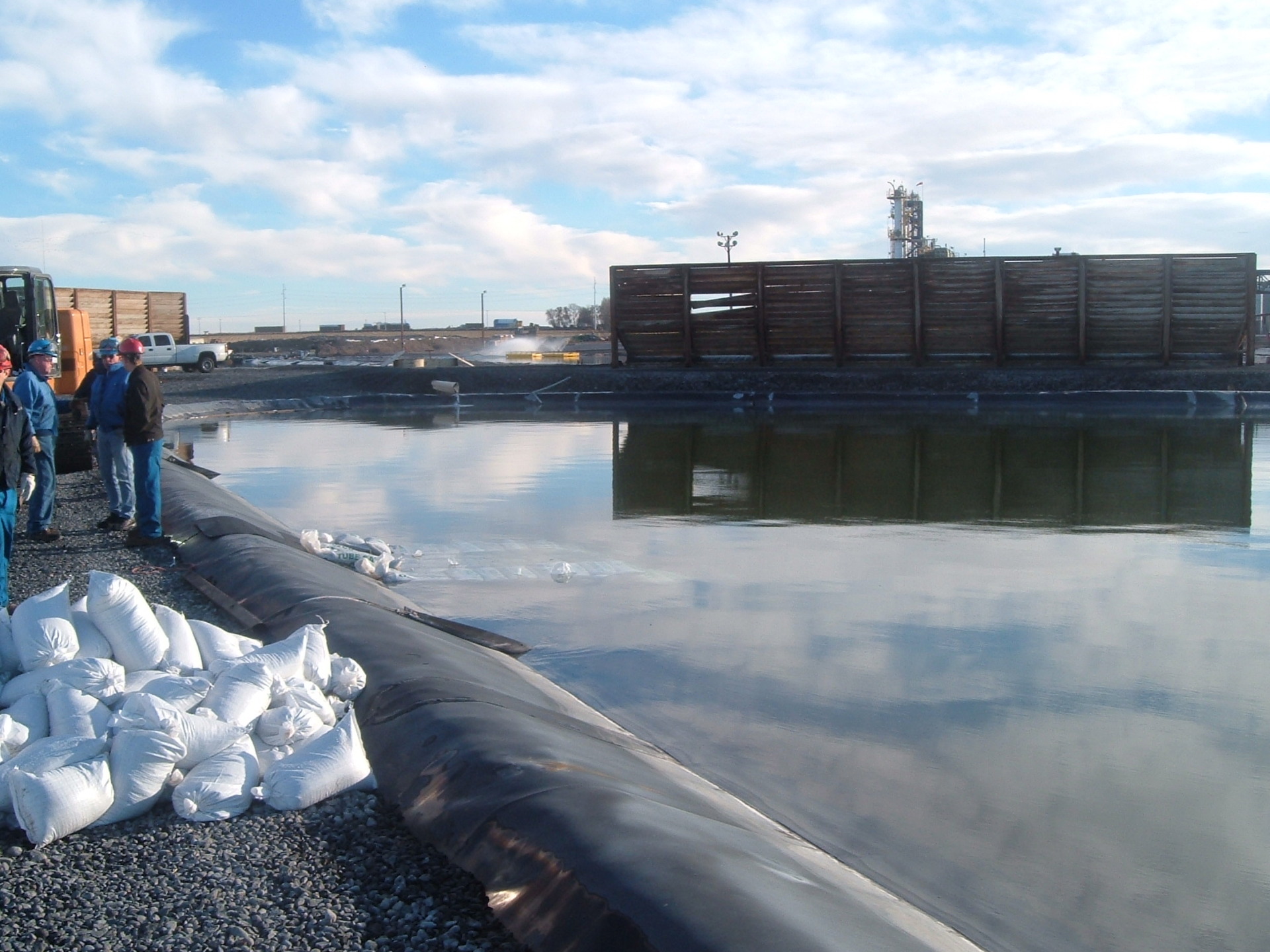
1.) This is a wastewater pond at the REC Silicon plant needed repairs done to the liner. The sandbags in the water have been piled over the hole in the liner to help prevent seepage.
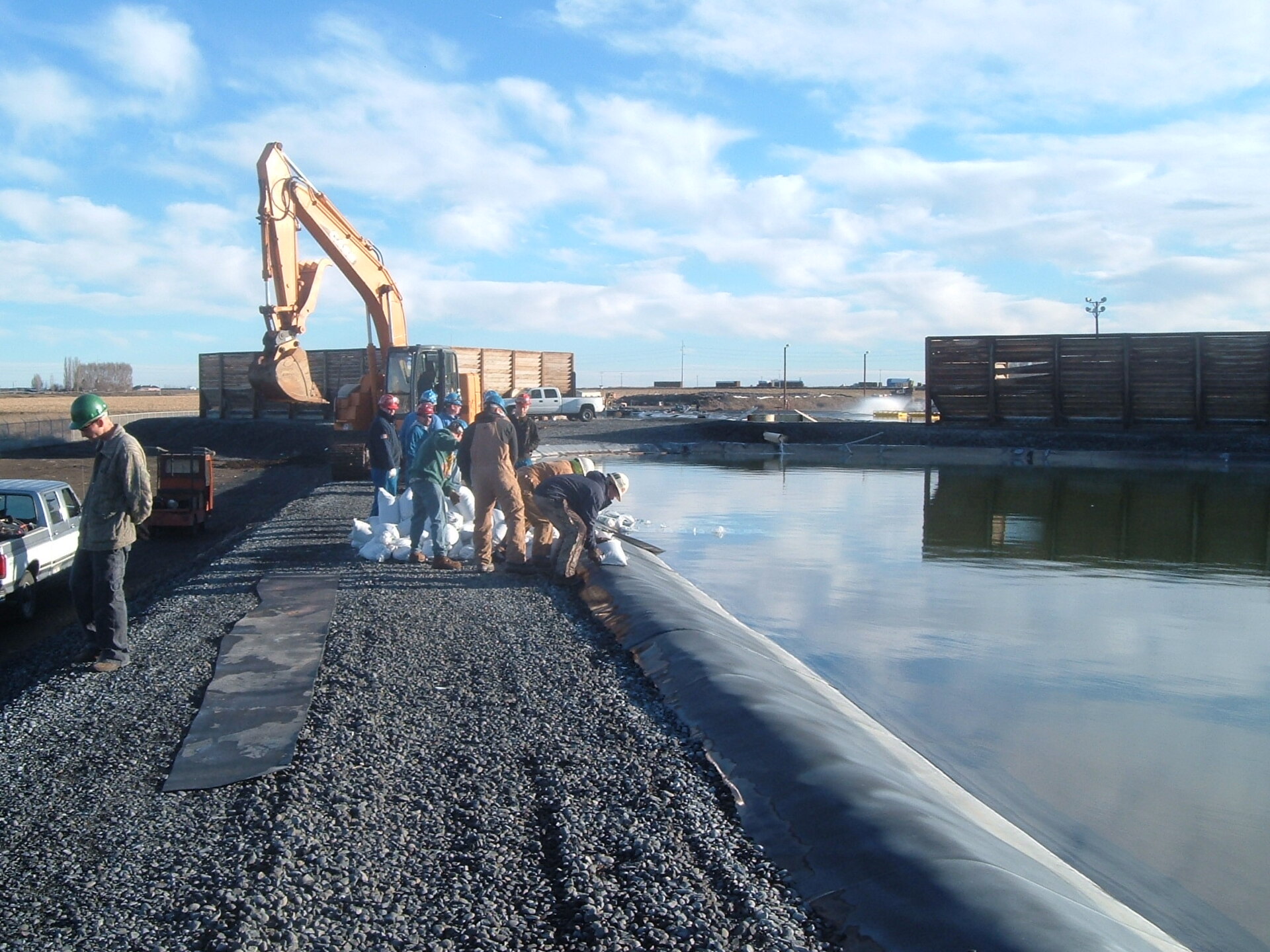
2.) Workers are currently preparing to unload the AquaDam® and position it at its designated starting bank. AquaDams are delivered in a rolled-up form, resembling a carpet roll on a wooden beam. They are encased in a protective covering and come equipped with lifting ropes or straps for convenient transportation.
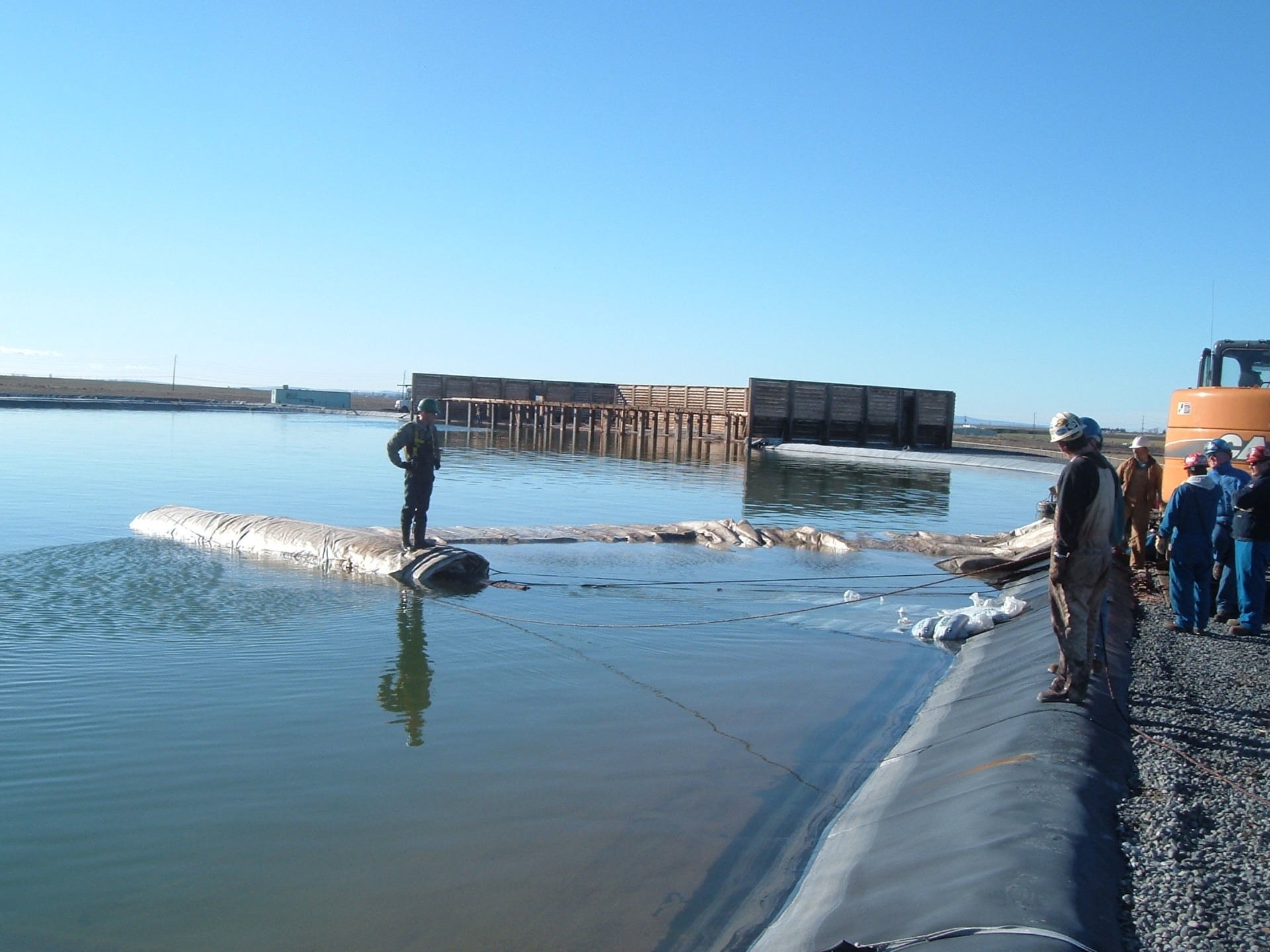
3.) The single closed end (SCE) AquaDam® has been launched from its starting bank and is being filled with water from the pond.
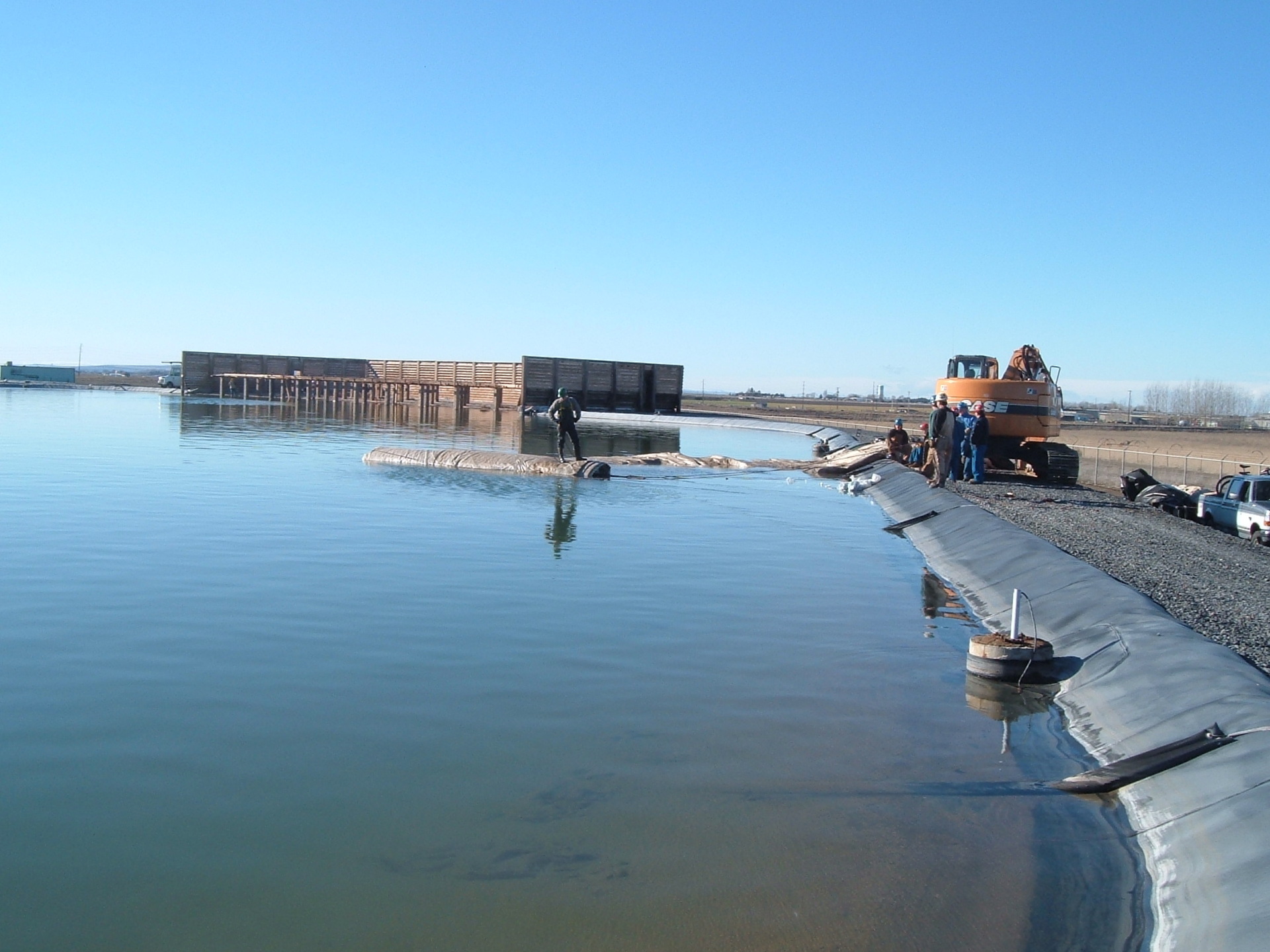
4.) AquaDams are constructed using lightweight and flexible materials, allowing them to float when empty in deep enough water.
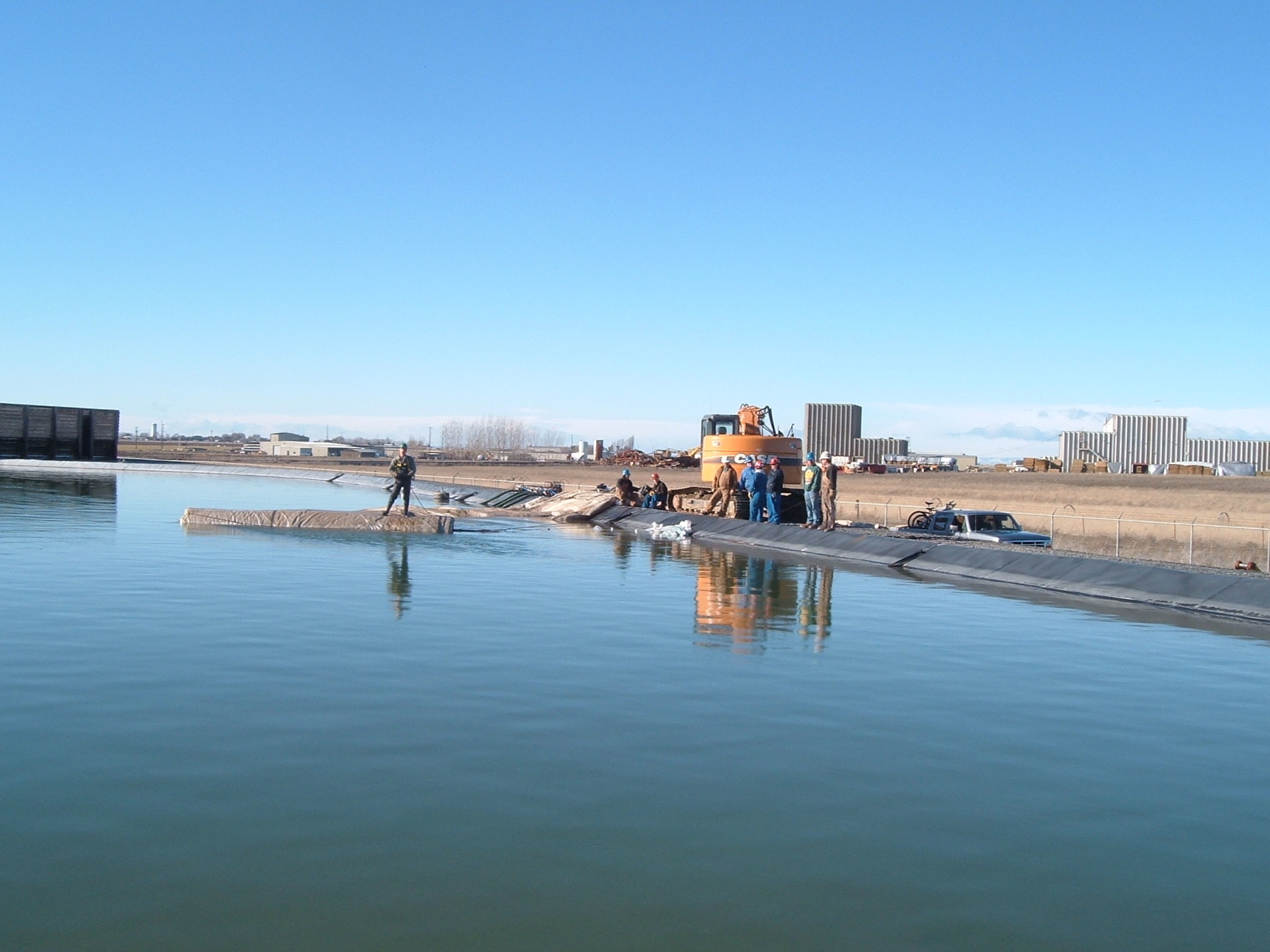
5.) As the AquaDam® is filled with water, the pressure from the water inside the fill-tubes pushes against the roll end, causing it to gradually unroll.
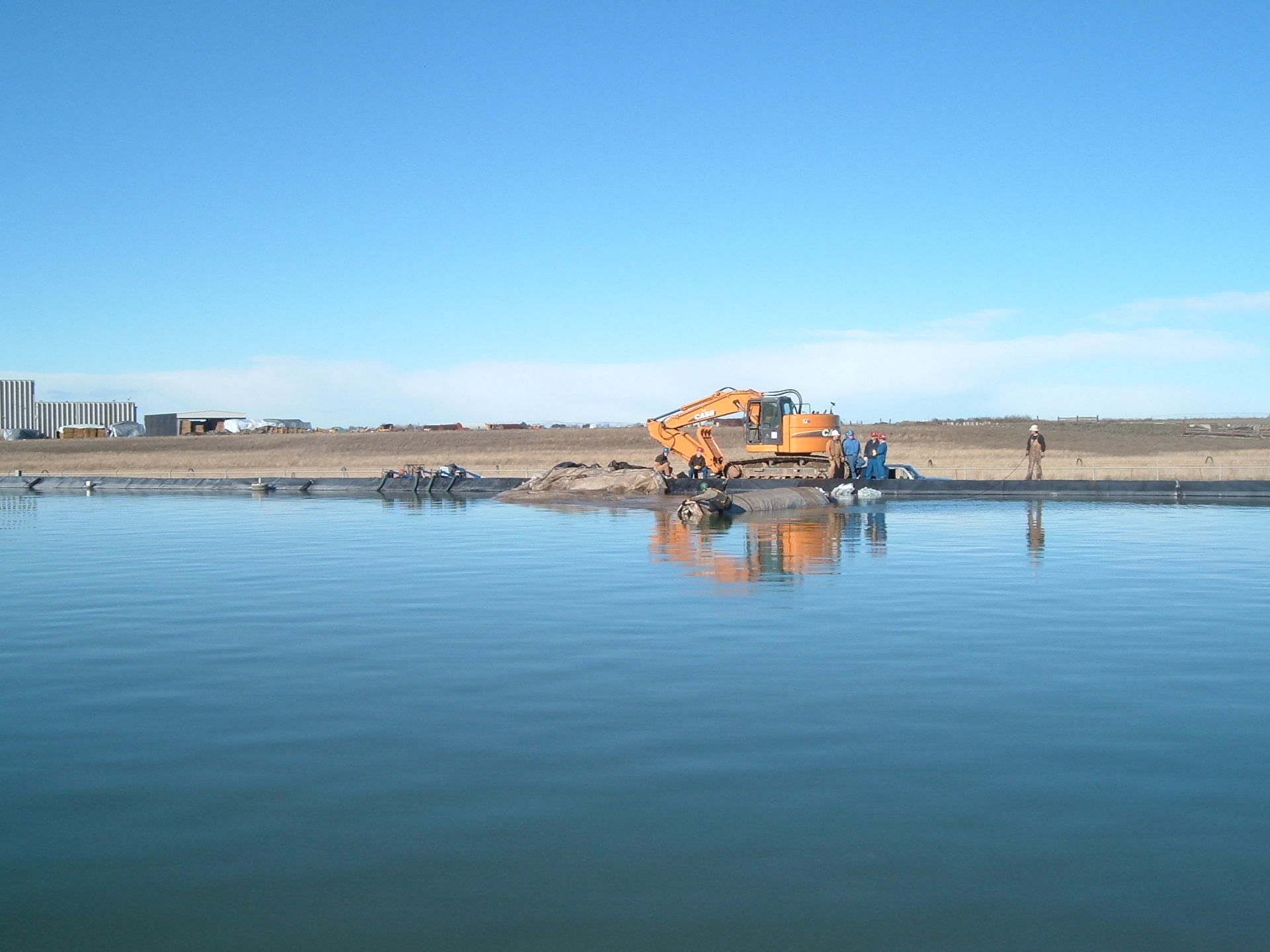
6.) This AquaDam® is being installed in a horseshoe or "U" shape configuration. The AquaDam® can be turned during installation in different ways. One method involves slowing down or stopping the pump to the fill-tube on the inside of the turn. Another option is to pull on one side of the log around which the AquaDam® is rolled, using ropes attached to heavy equipment.
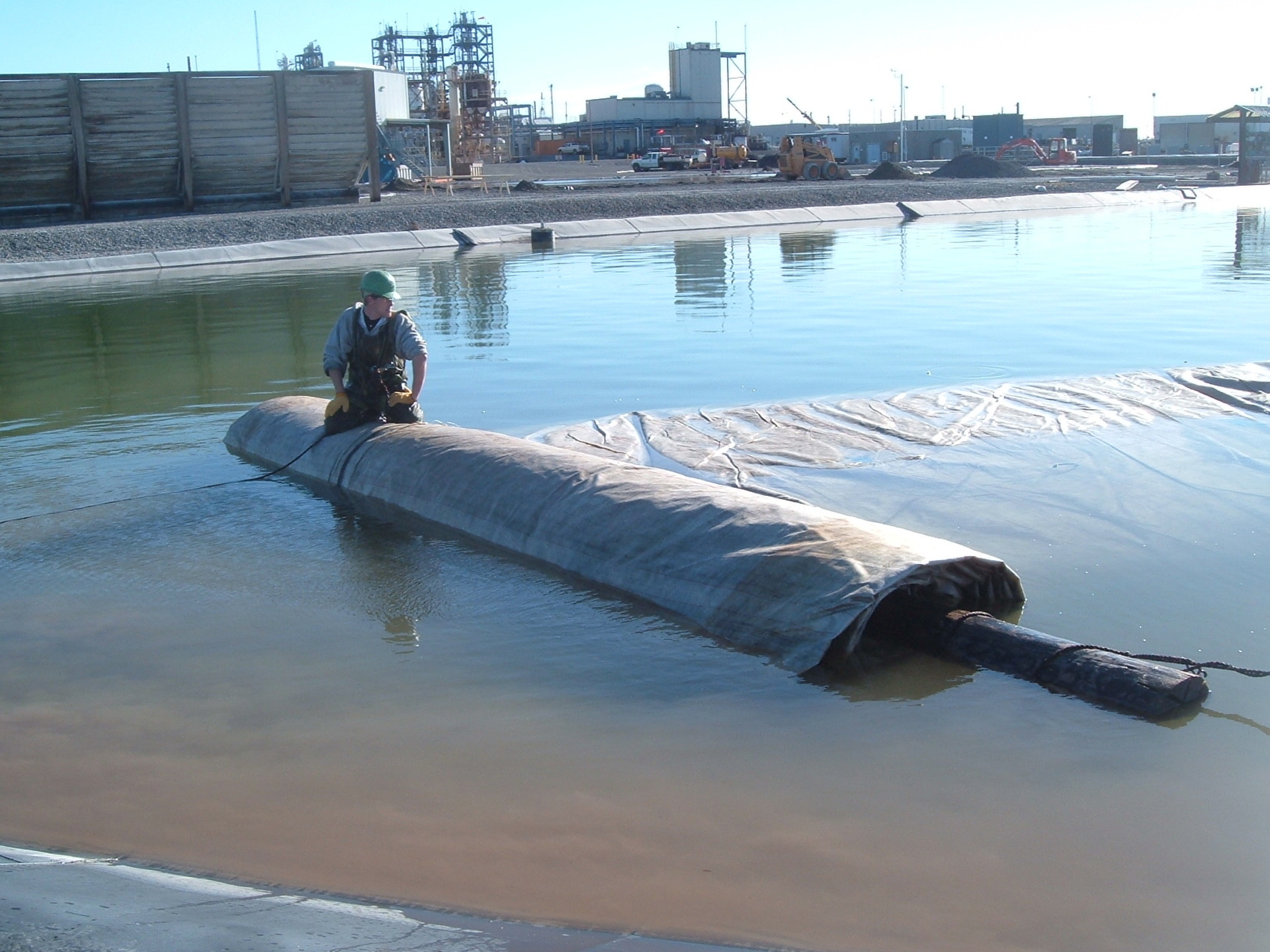
7.) The roll end of the AquaDam® has almost reached its ending bank.
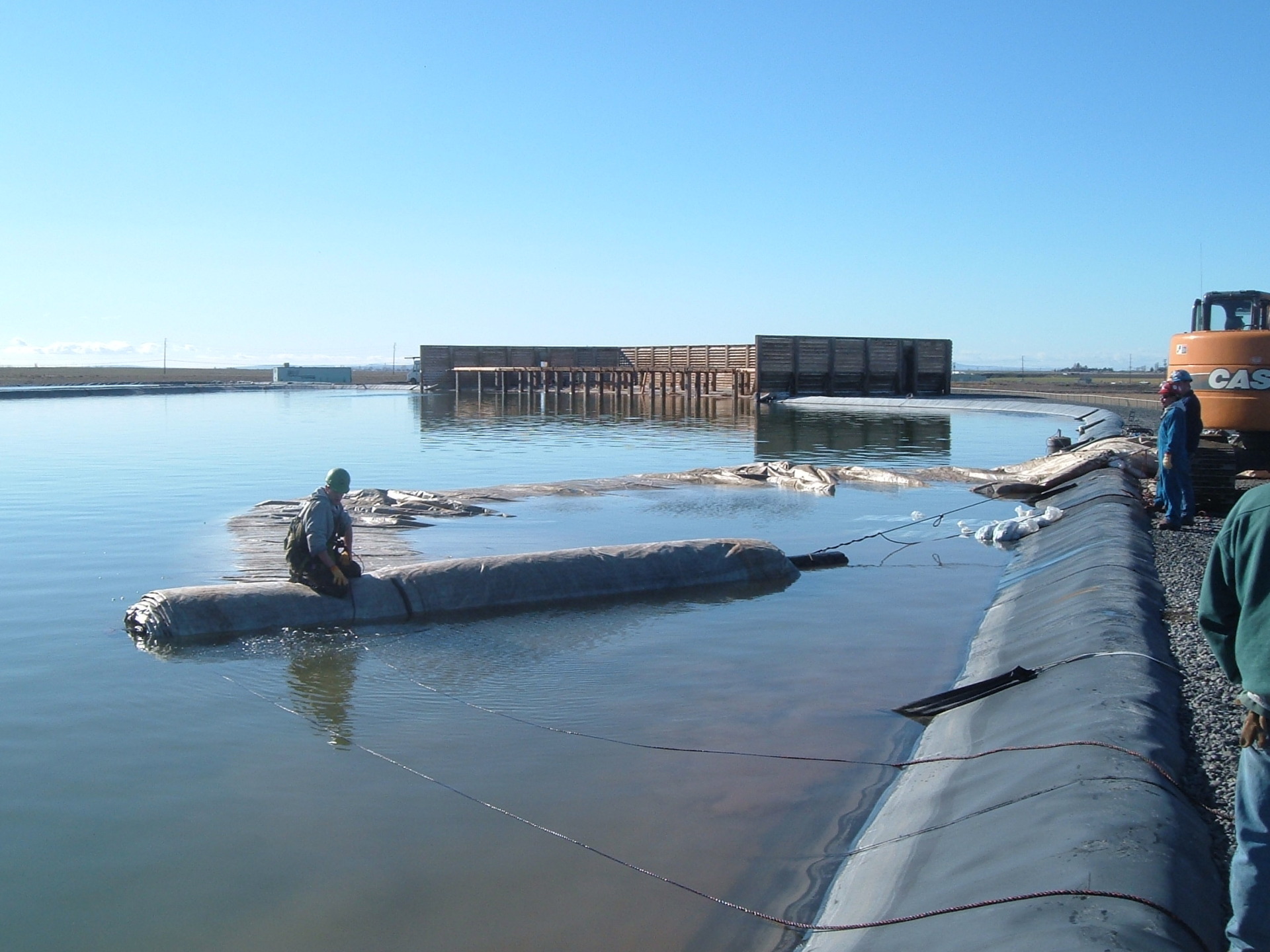
8.) The AquaDam® should meet both the starting and ending banks square. Workers use ropes to align the roll with the bank.
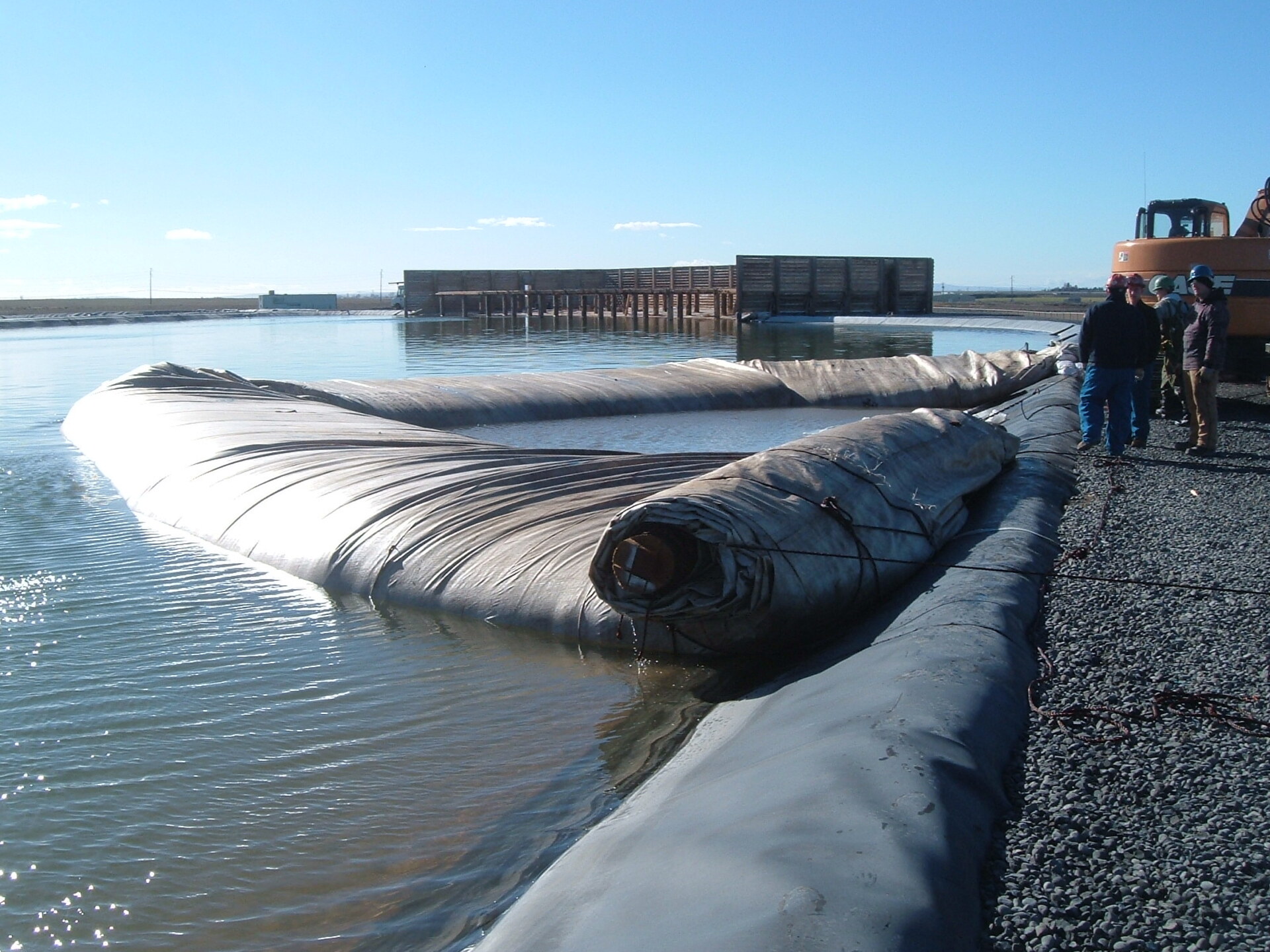
9.) Once the dam reached its ending bank, workers used rope to secure the roll from moving and continued to finish filling the AquaDam® with the pond water.
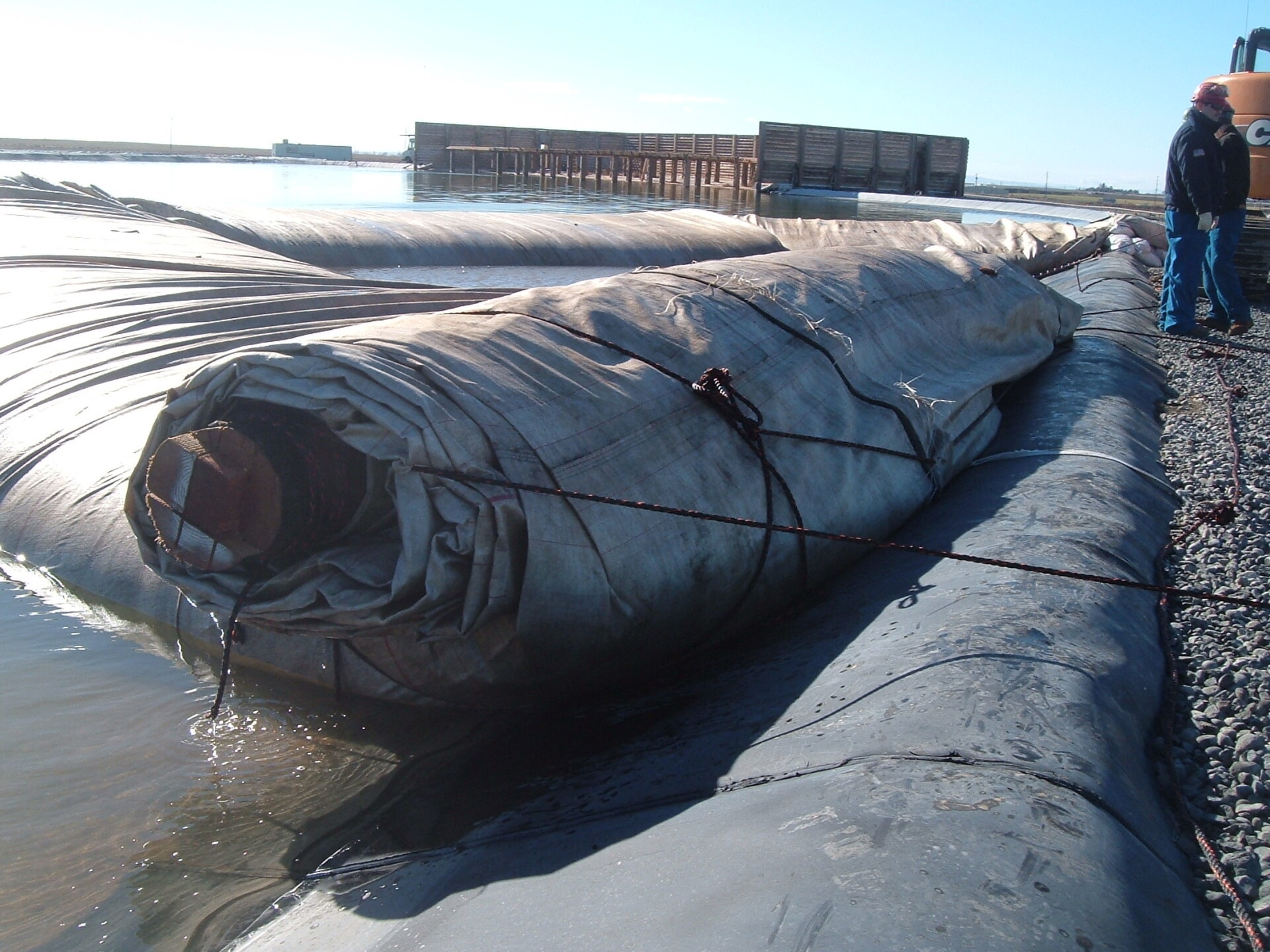
10.) Ropes have secured the beam and roll from moving until workers are done repairing the liner.
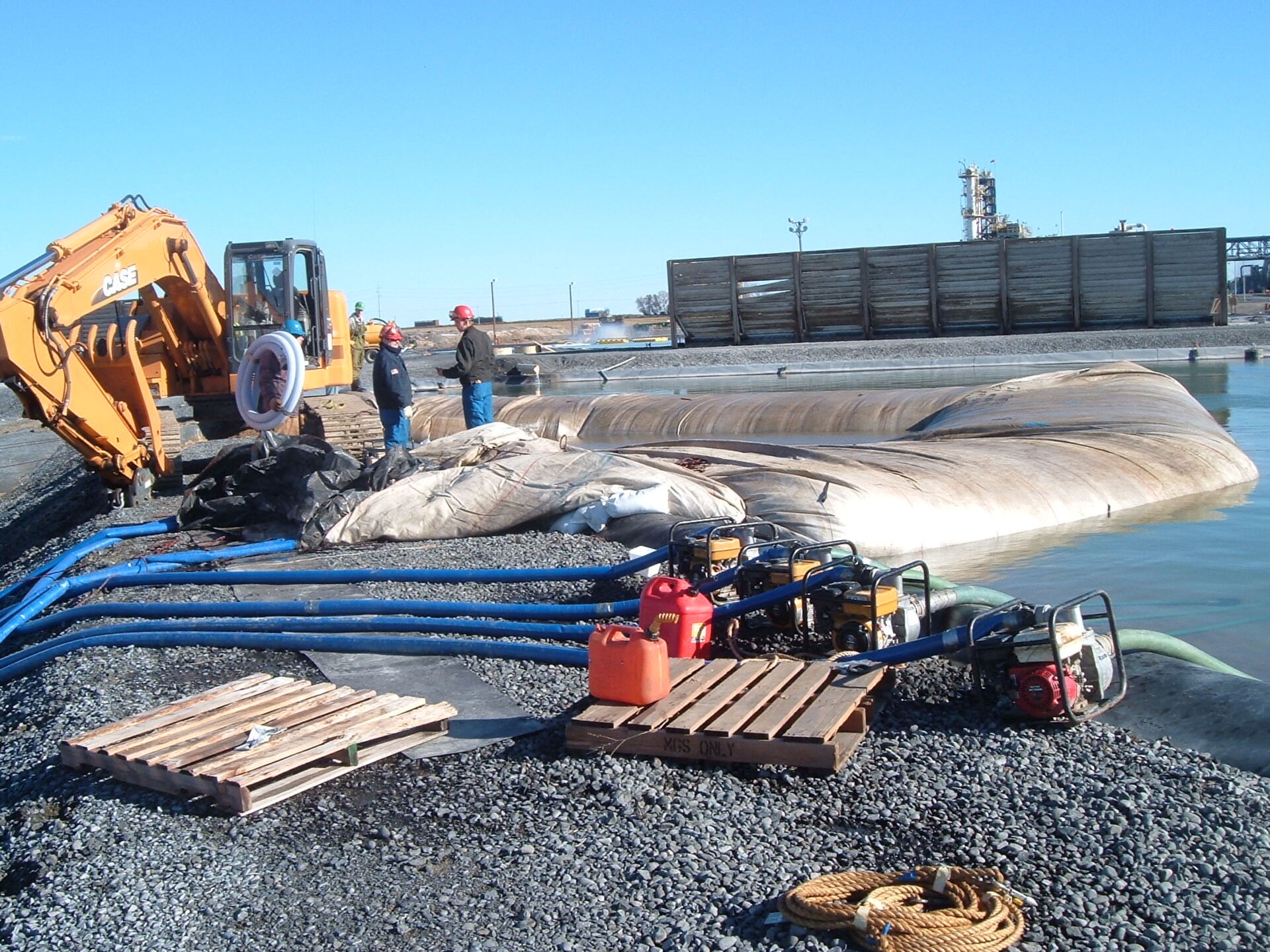
11.) Here we can see the starting bank for the SCE AquaDam. To ensure proper installation and functionality of a SCE AquaDam, it is essential to have a starting bank that maintains a higher elevation than the body of the AquaDam. The open end and fill-tubes of the SCE AquaDam® must remain elevated above the full height of the dam along its designated path. It is important to note that an AquaDam® will only reach its maximum height at the lowest elevation point along its designated path. The top of the berm of the pond worked great.
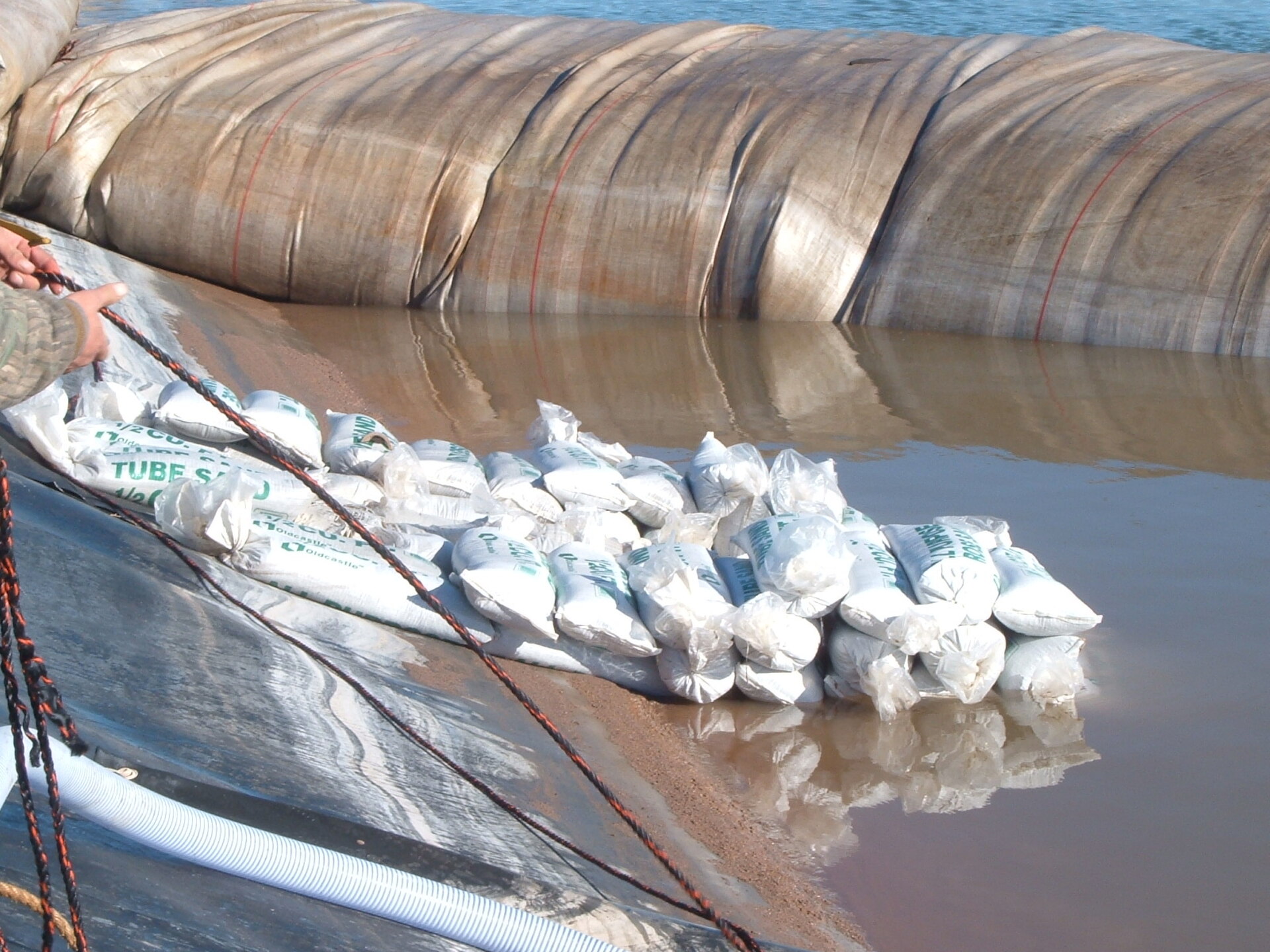
12.) Sandbags were temporarily piled on top of the hole to help seal the pond liner, until repairs were completed.
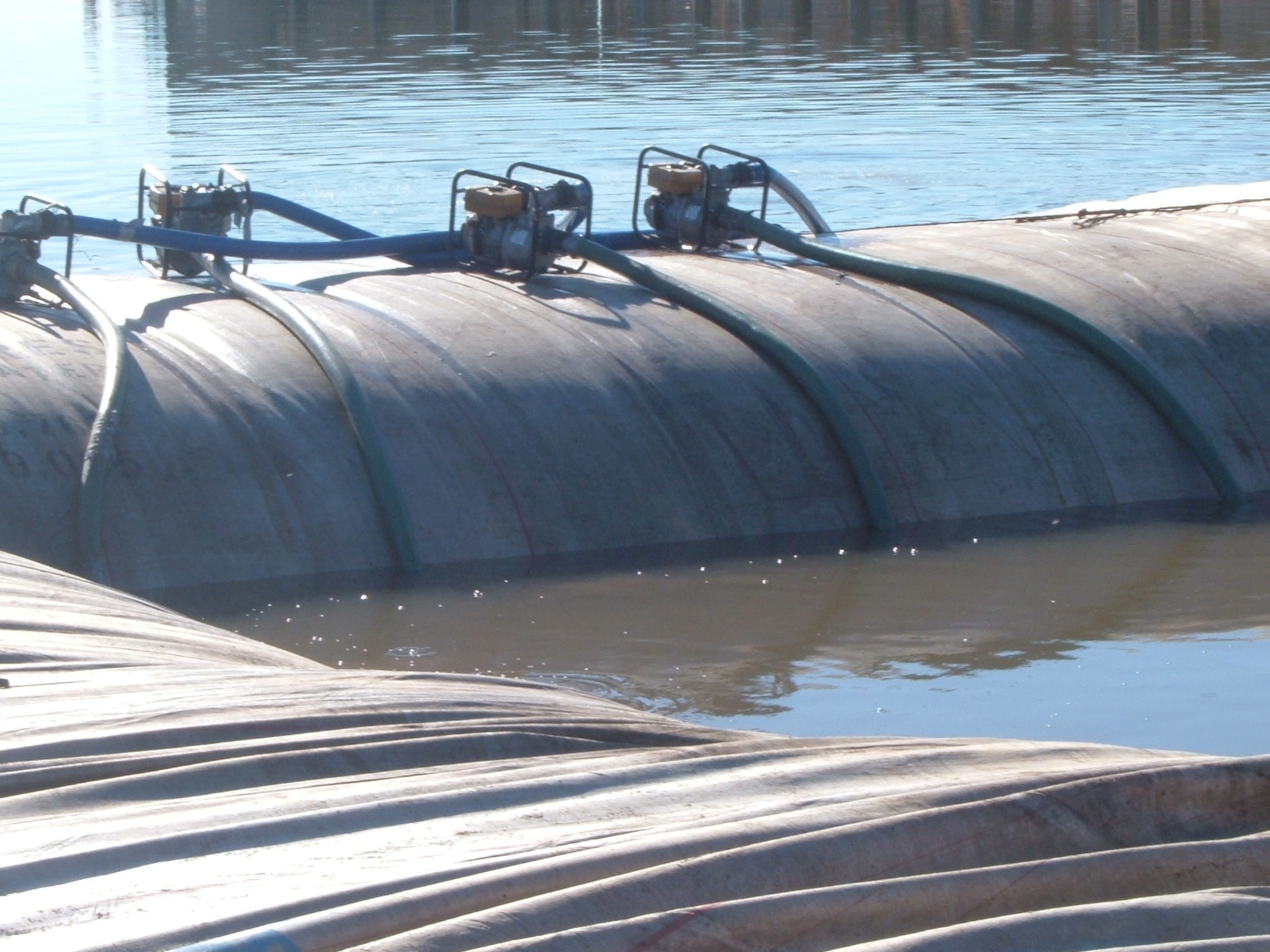
13.) These pumps were utilized to de-water the work area in preparation for repairs. They are securely positioned on the filled AquaDam.
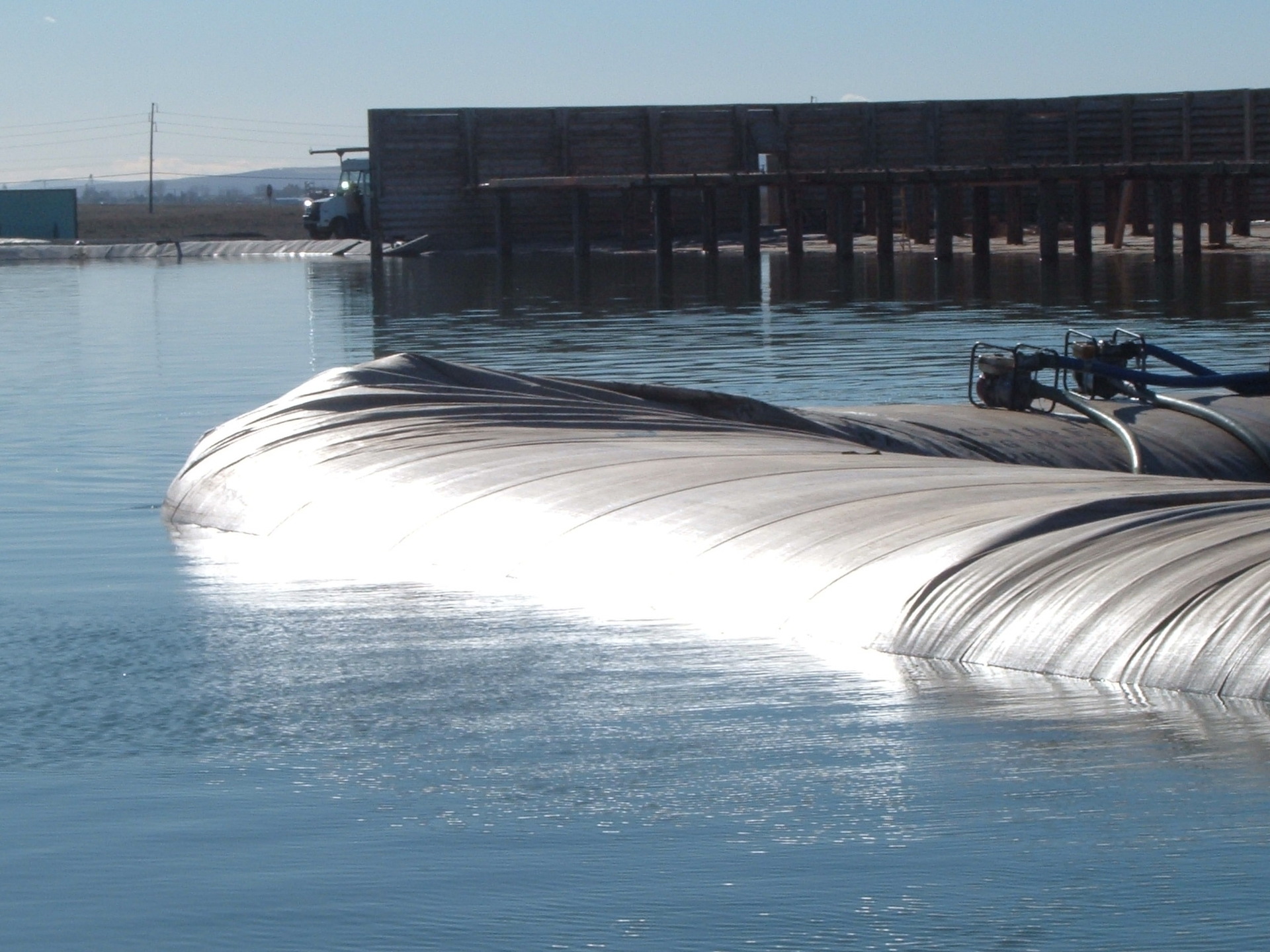
14.) The AquaDam® is currently holding back a significant amount of water, appearing to be about two feet taller than the water around it.
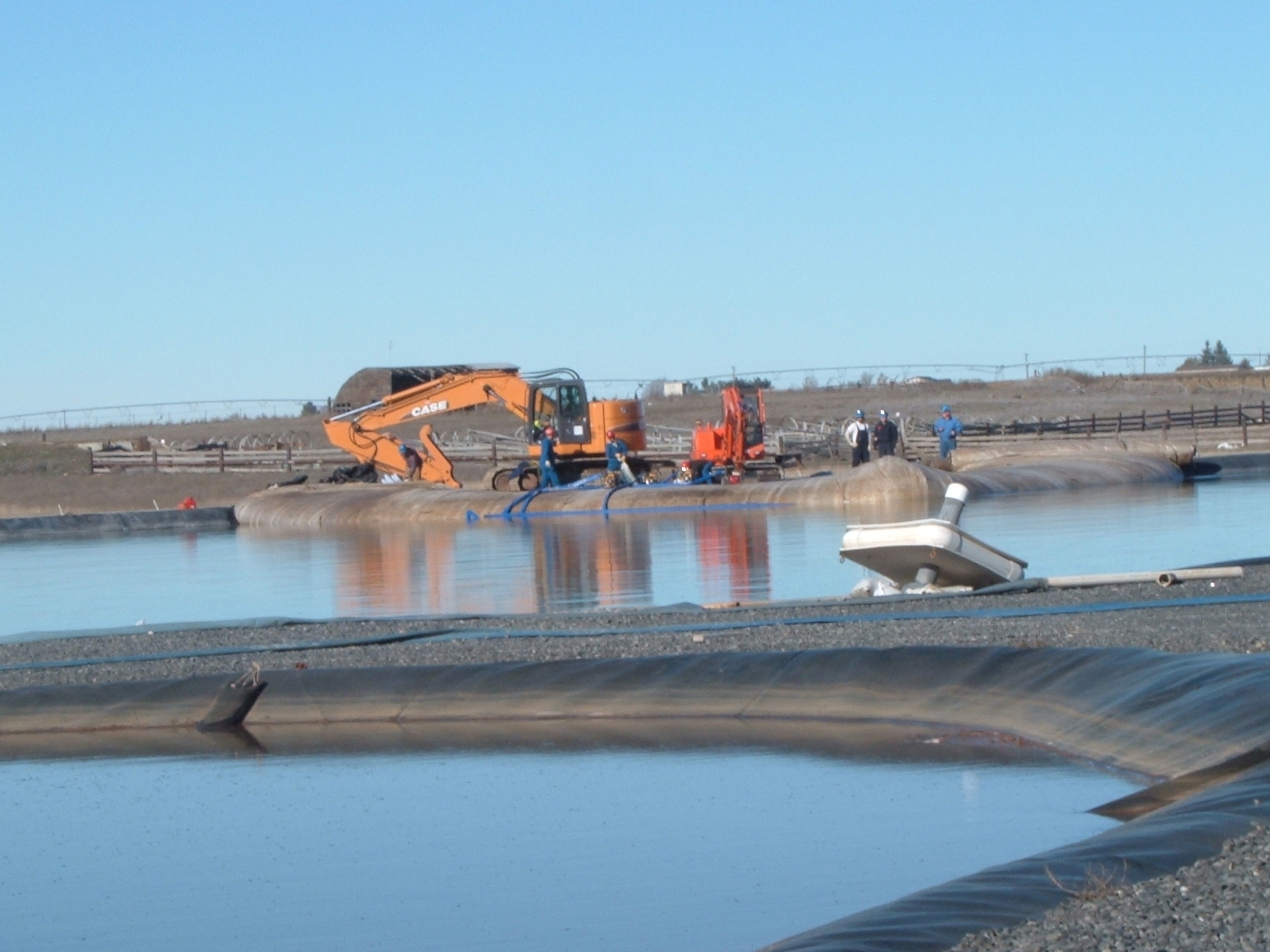
15.) Can you see where the water depth is the greatest against the AquaDam? As a SCE AquaDam® reduces in height it’s width slightly increases.
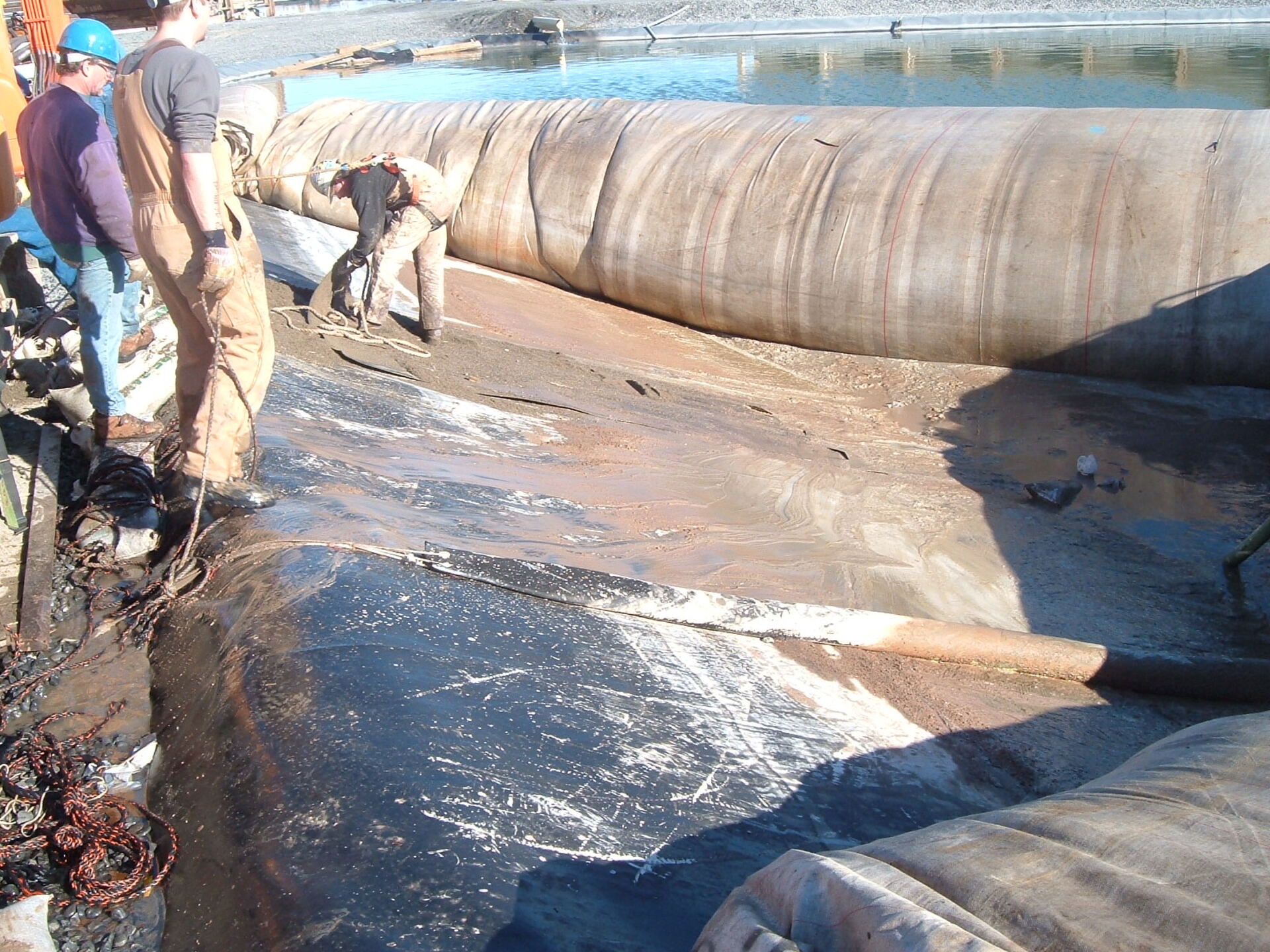
16.) The work area has been de-watered and the pond liner can now be repaired.
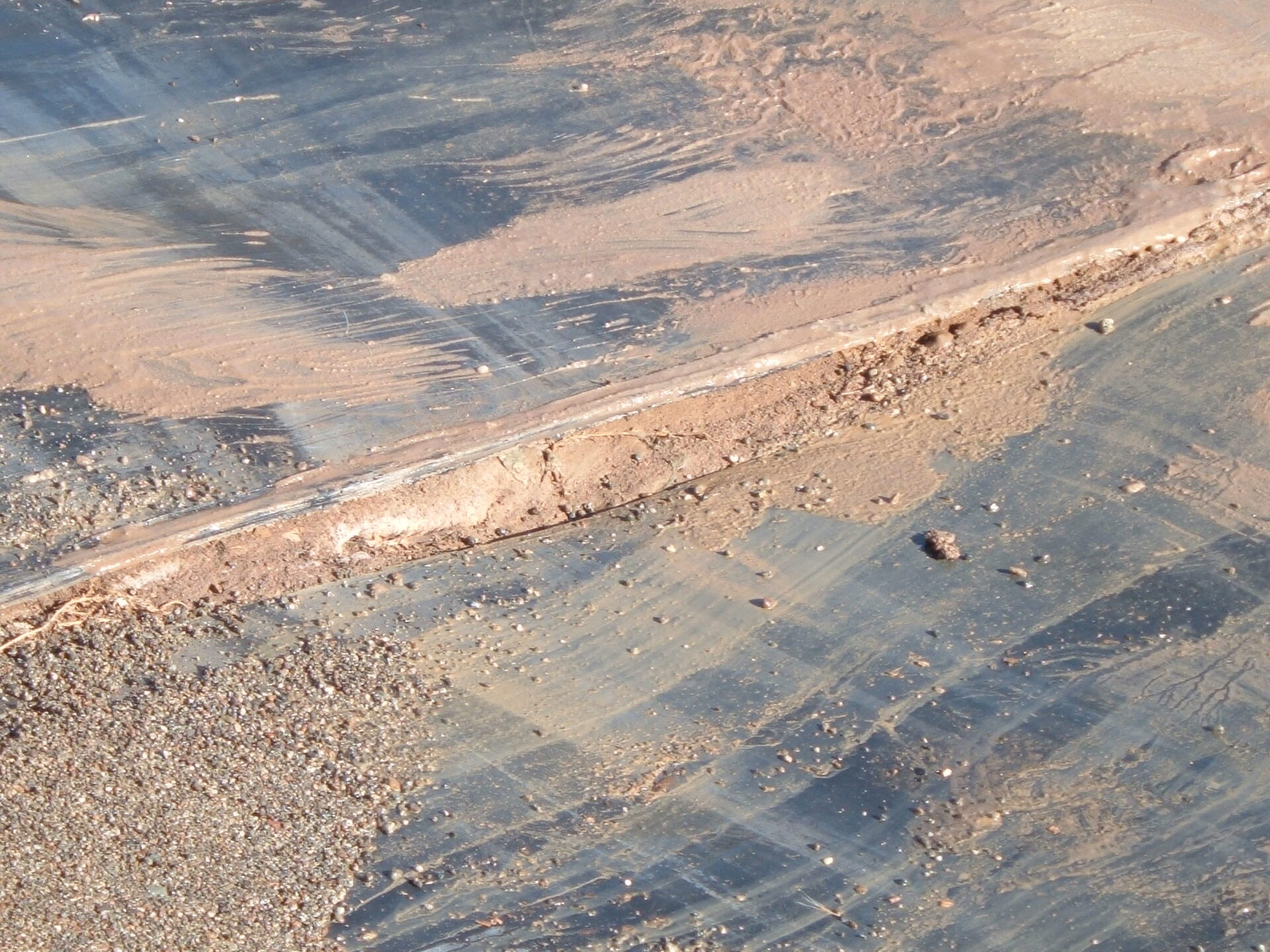
17.) Here we can see the hole in the liner that was causing the issue.
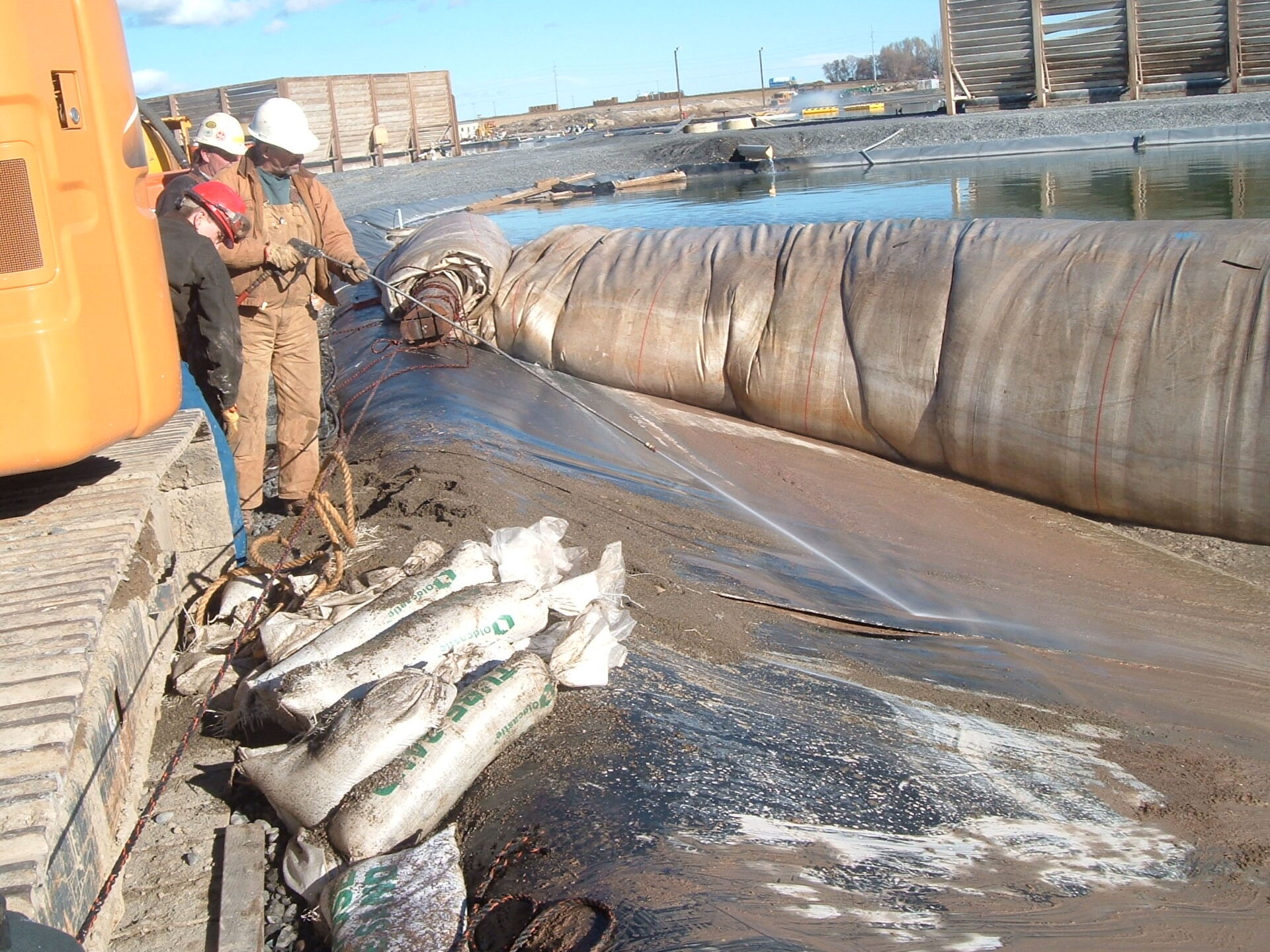
18.) Workers needed to clean the liner before it could be repaired.
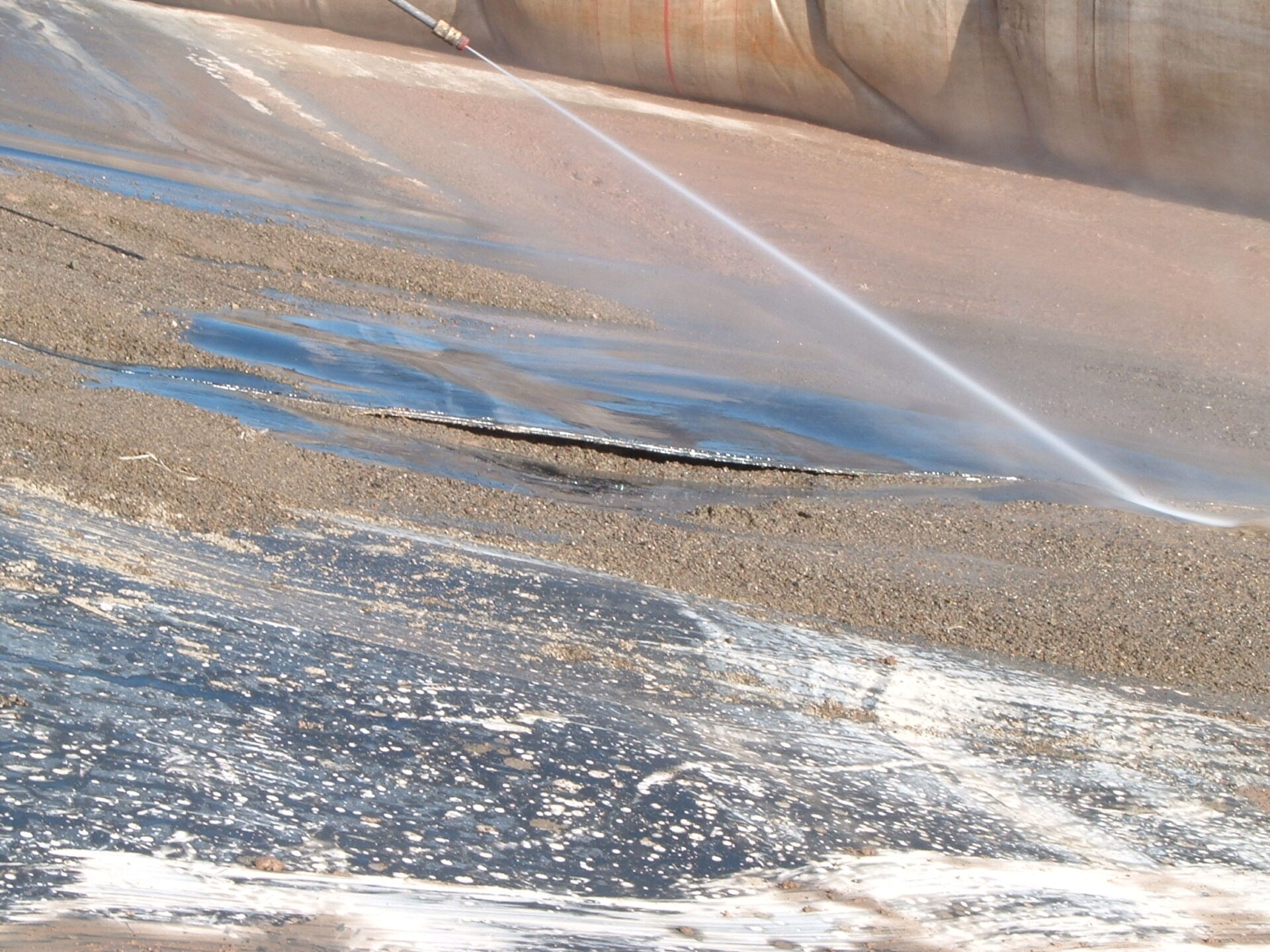
19.) A significant amount of sediment has accumulated around the hole in the pond liner.
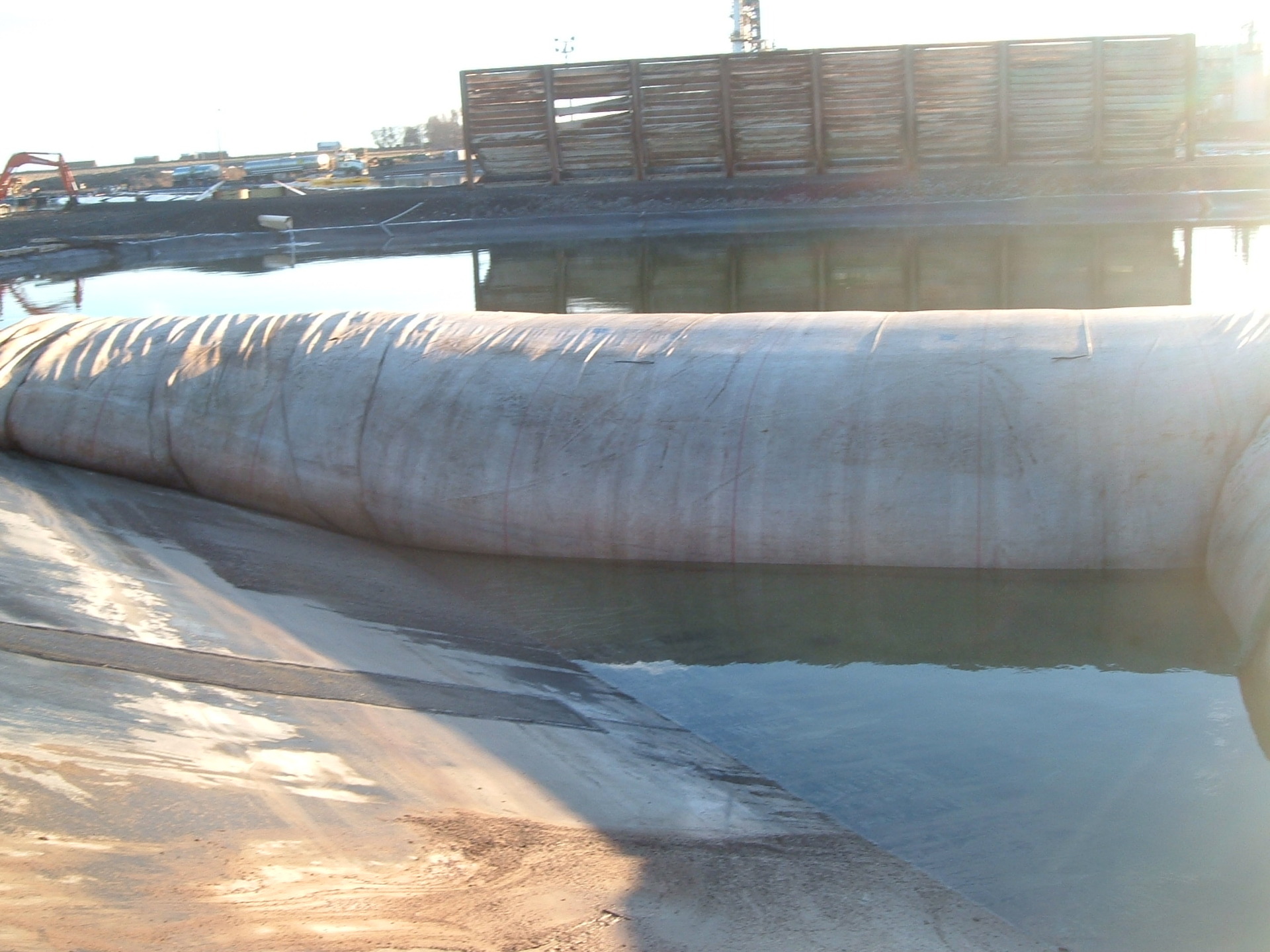
20.) The pond liner has been successfully repaired within the de-watered work area.
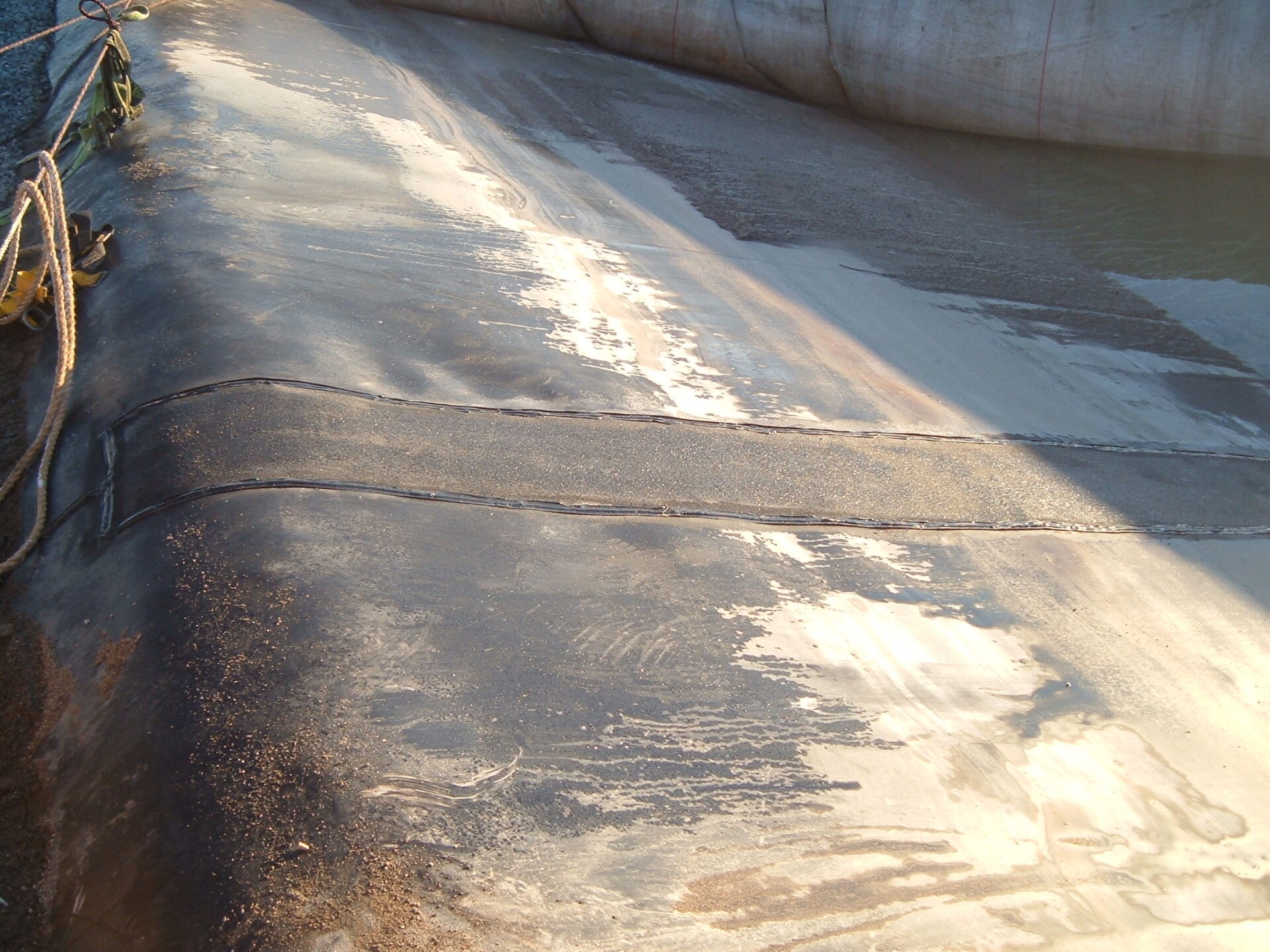
21.) Workers have successfully installed a new strip of liner over the damaged area and securely welded it in place.
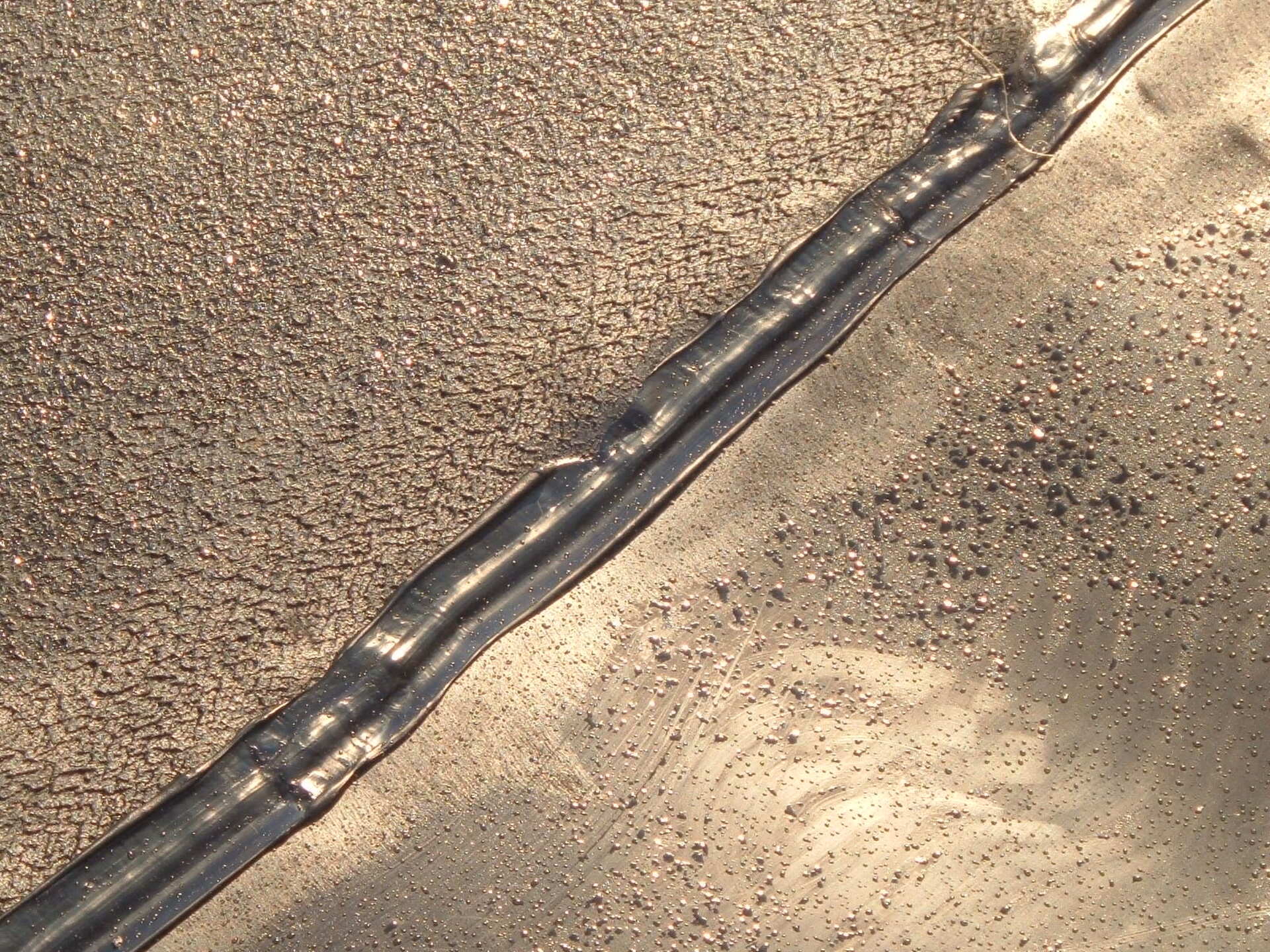
22.) Here is a close up of one of the welds on the newly repaired liner.
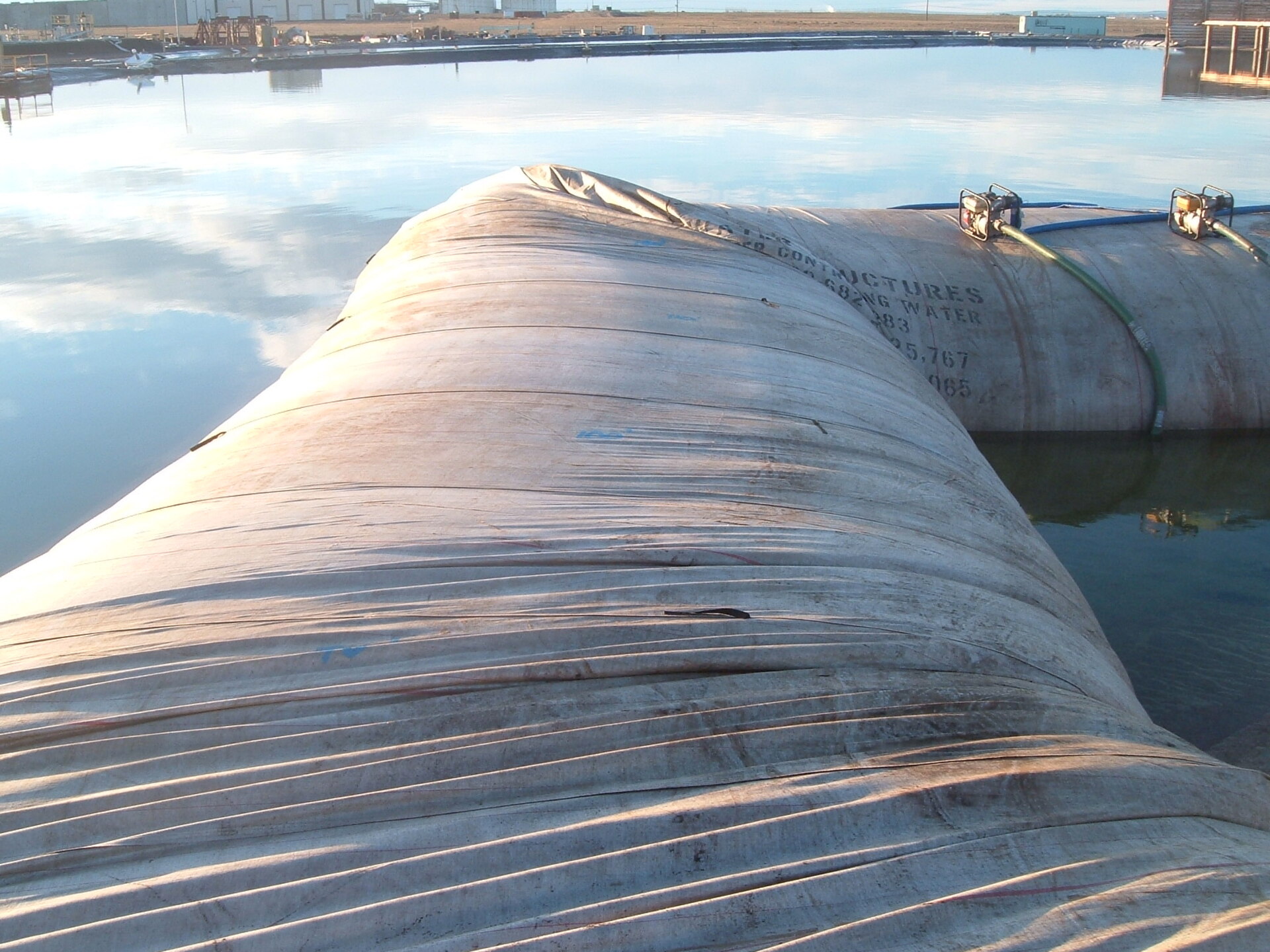
23.) The AquaDam® experienced a bubble in the top of the material at the turn due to a sharp 90-degree angle, which likely most of the rise resulted from in air that was trapped in the loose material.
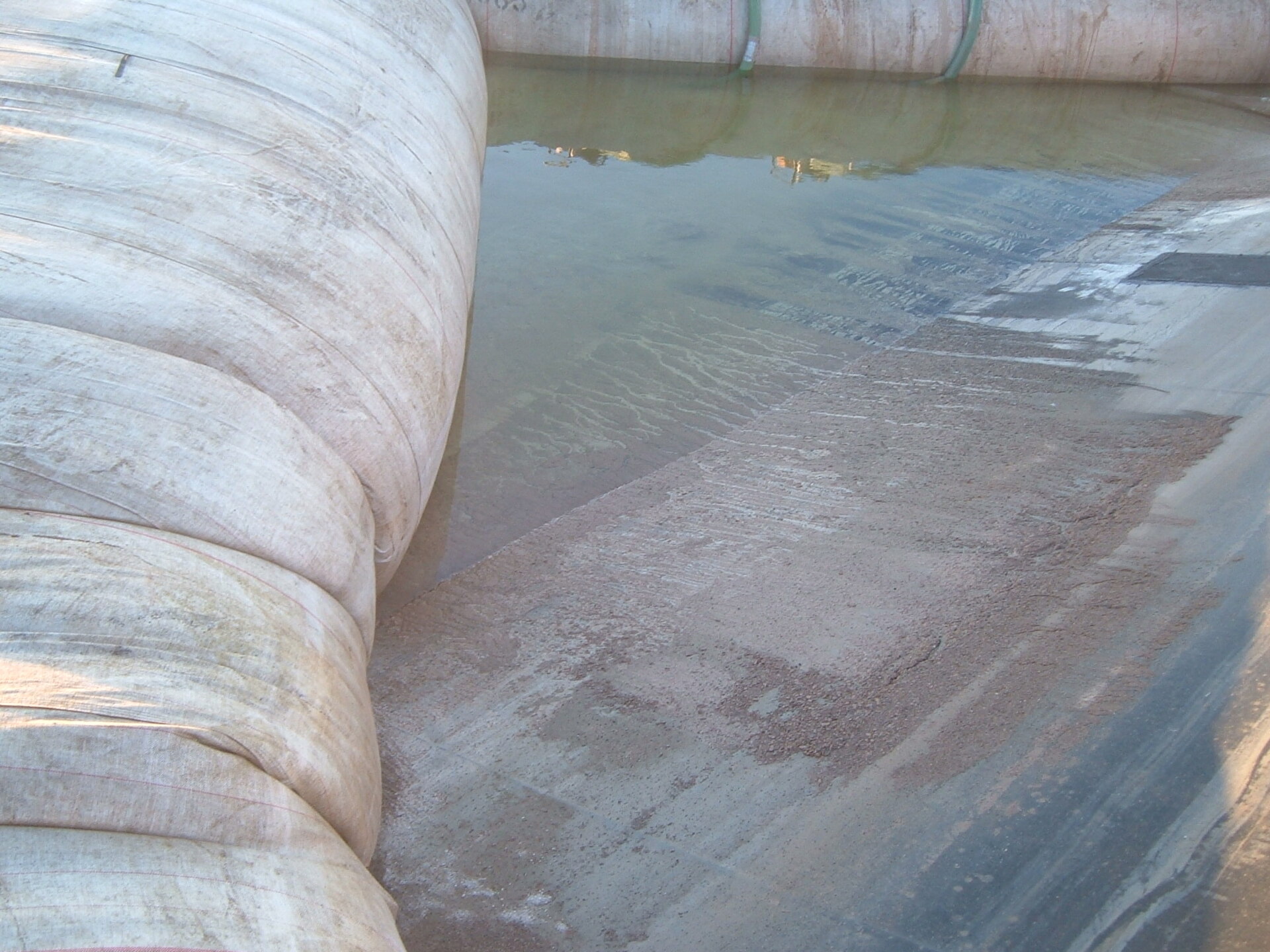
24.) The SCE AquaDam® has done a magnificent job as a cofferdam.
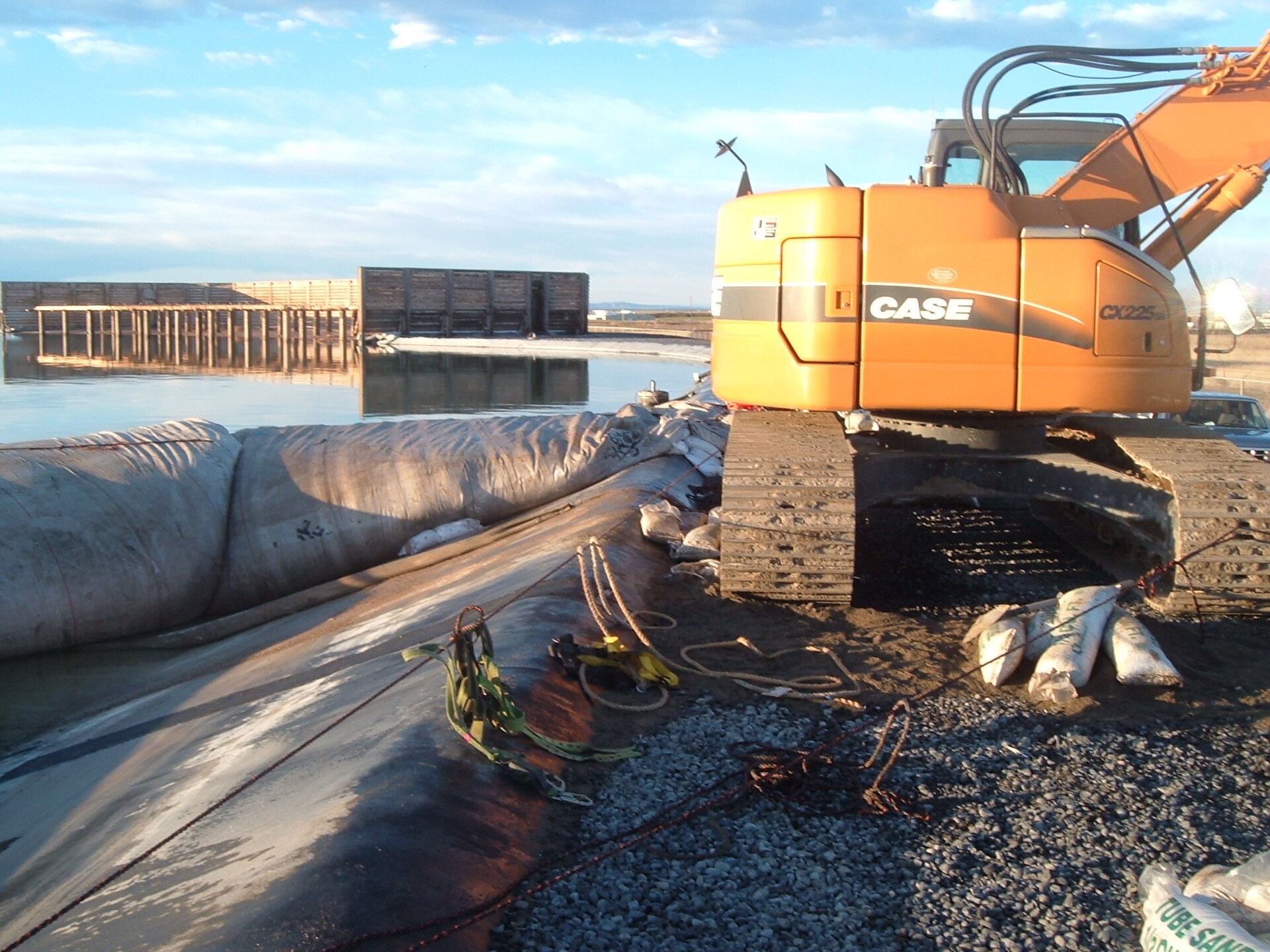
25.) All of the repairs have been finished and the next step is to remove the SCE AquaDam. Workers begin by re-watering the work area.
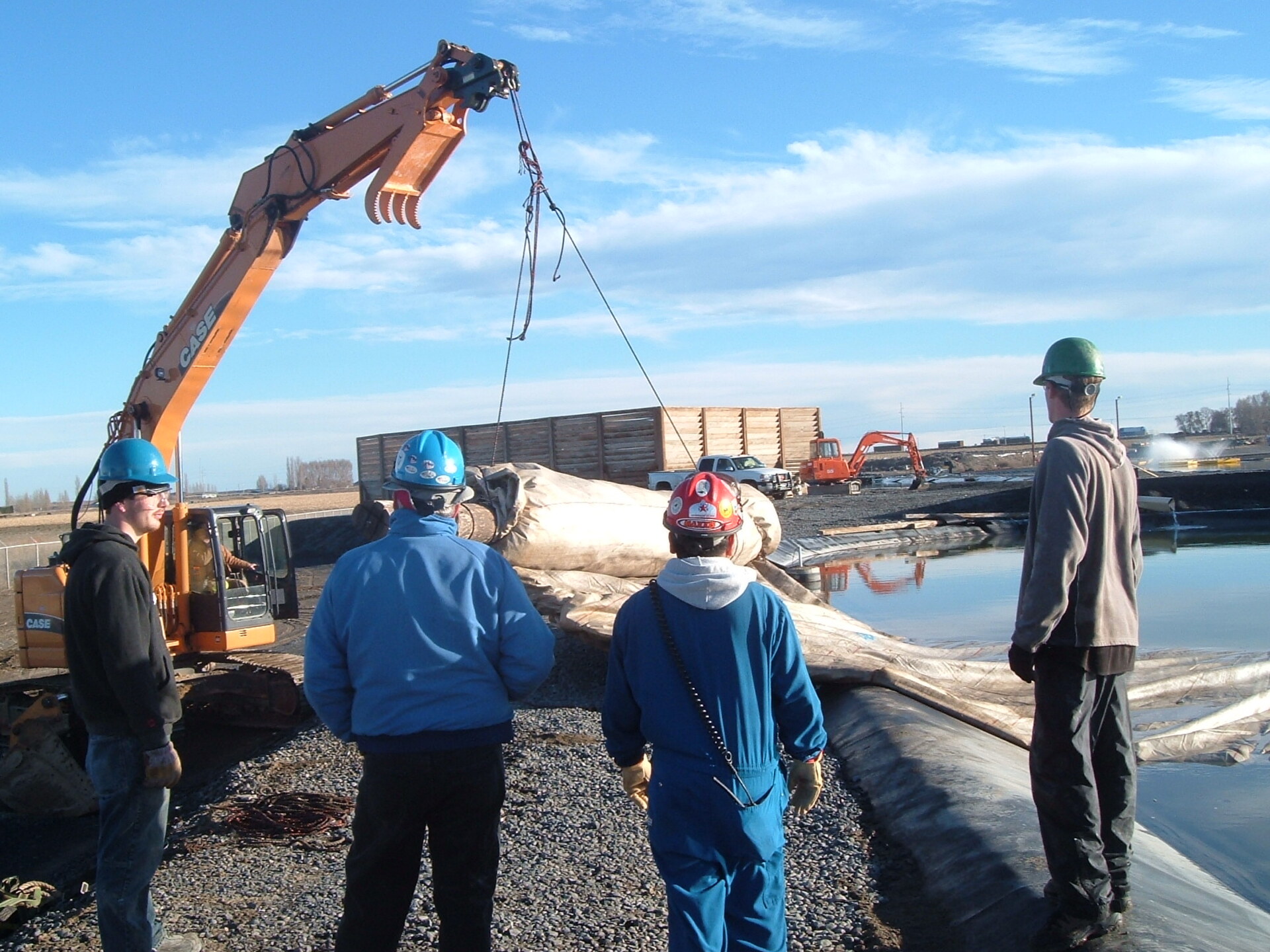
26.) The suction hoses were meticulously positioned in the fill-tubes to facilitate the drainage of water inside the SCE AquaDam. Subsequently, the fill-tubes were lowered into the water. Once the AquaDam® was sufficiently emptied to enable flotation, workers utilized an excavator to lift and pull the roll end, effectively draining the dam.
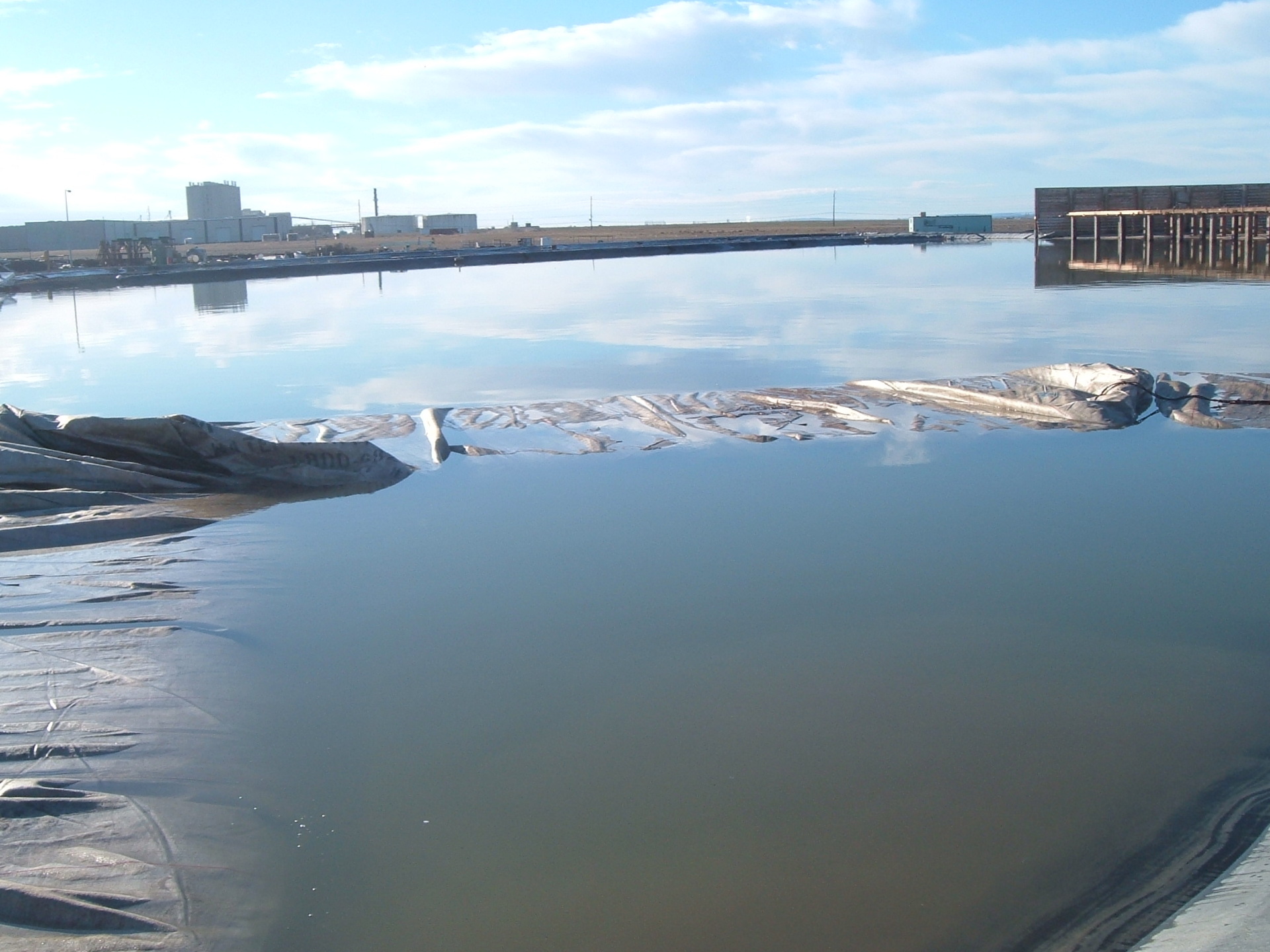
27.) The fill-tubes are placed at water level and as the roll end is lifted and pulled the water inside the AquaDam® drains back into the pond.
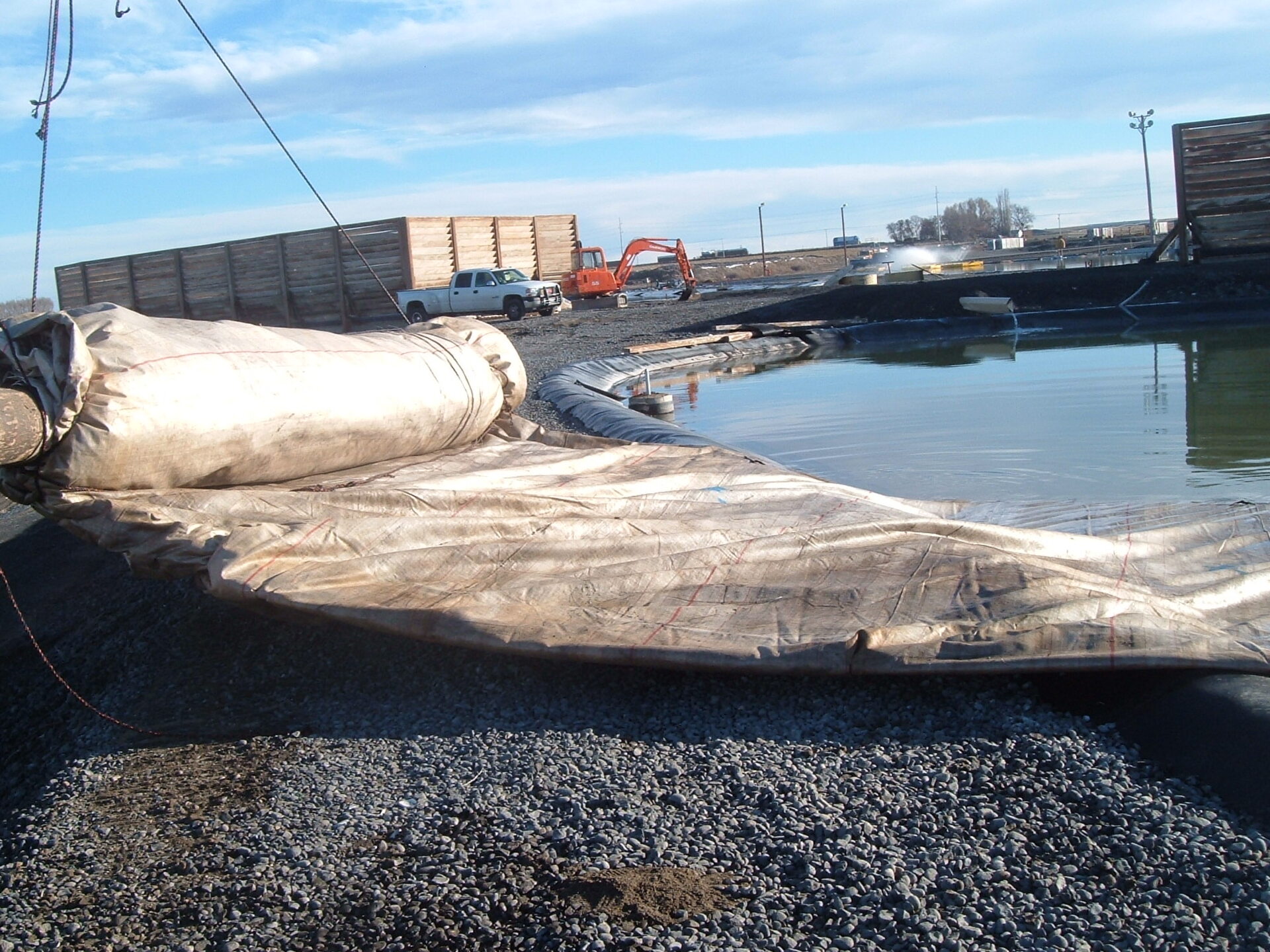
28.) Ropes can be wrapped around the beam so that as the ropes are lifted, the AquaDam® will re-roll.
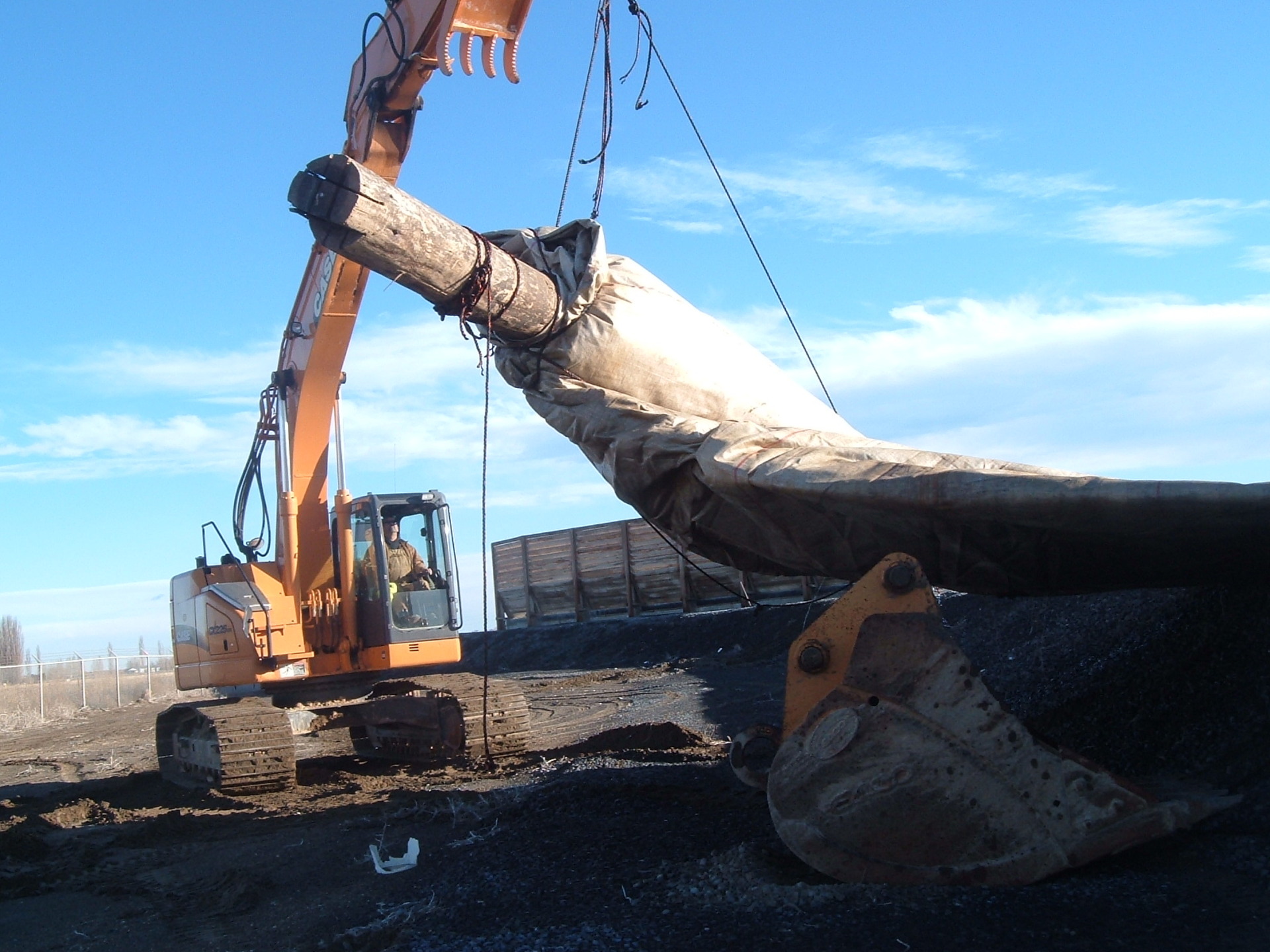
29.) Re-rolling works best if the ropes on the beam are spread out, with a spreader bar.
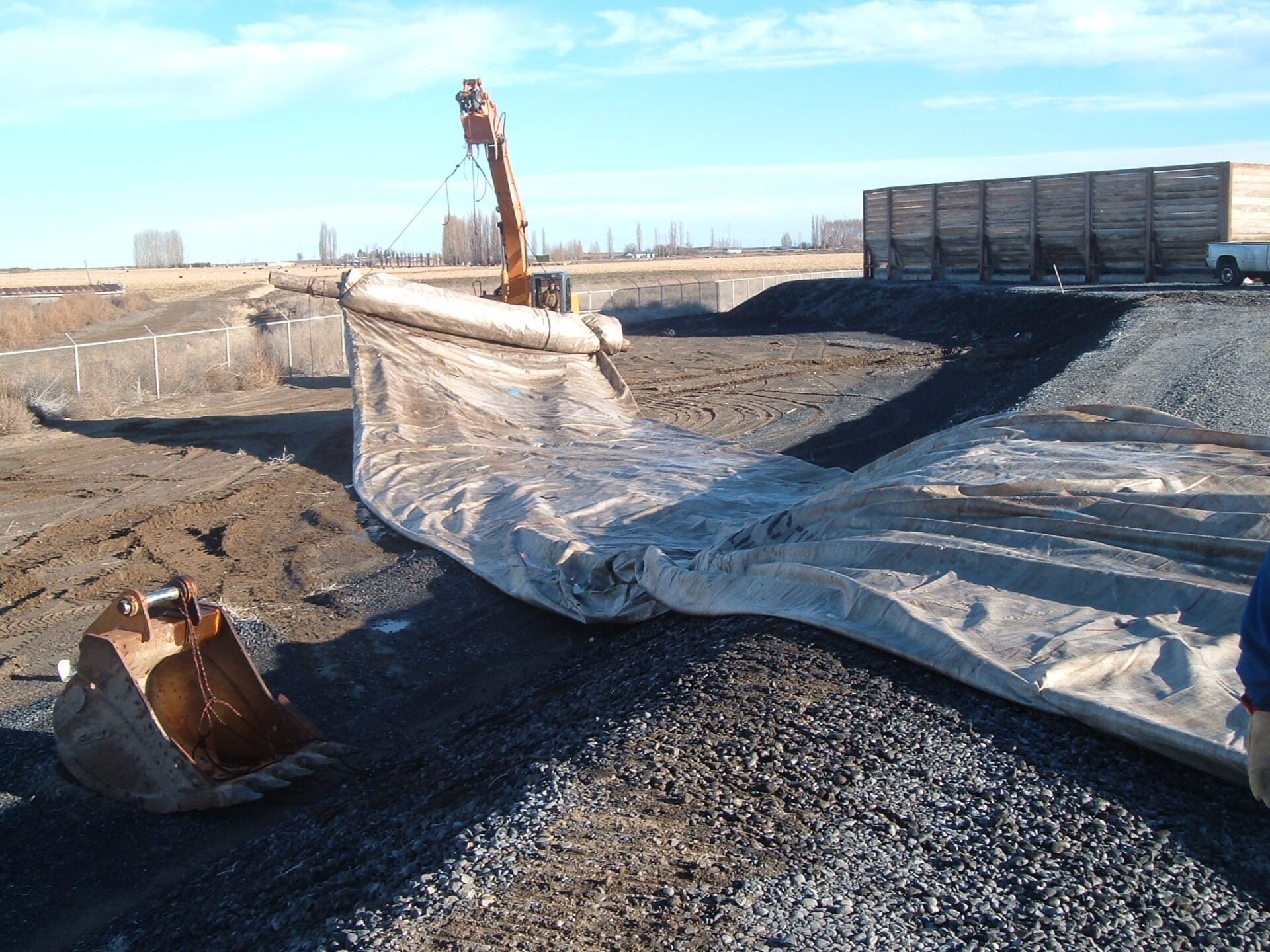
30.) Workers did not have a spreader bar at this job, so the AquaDam® was simply lifted and pulled out of the pond by the excavator to be re-rolled later.
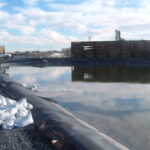
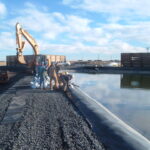
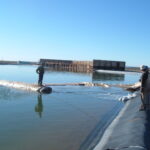
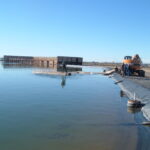
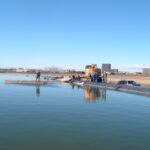
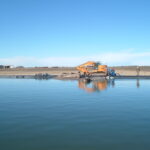
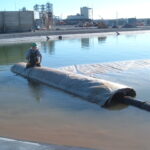
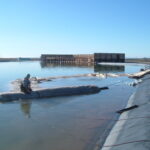
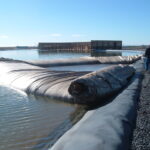
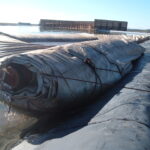
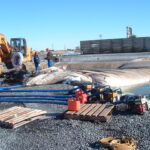
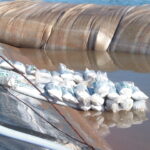
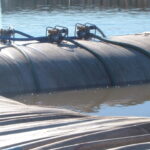
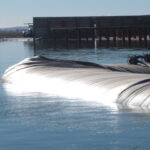
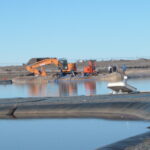
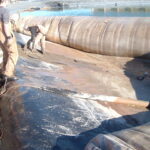
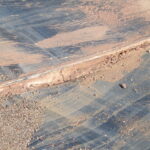
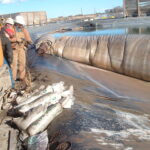

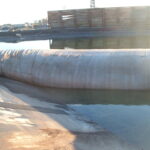
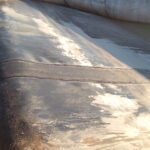
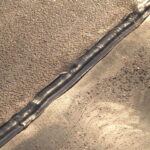
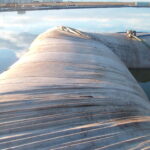
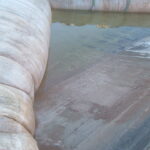
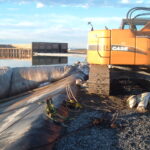
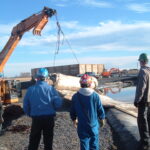
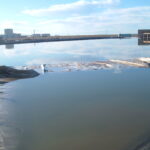
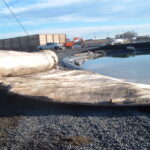
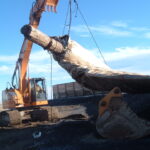
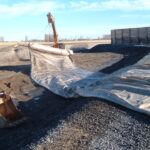
Single Closed End (SCE) AquaDam, Wastewater Pond, Pond Liner Repair, Horseshoe/”U” Shape Configuration, REC Silicon
